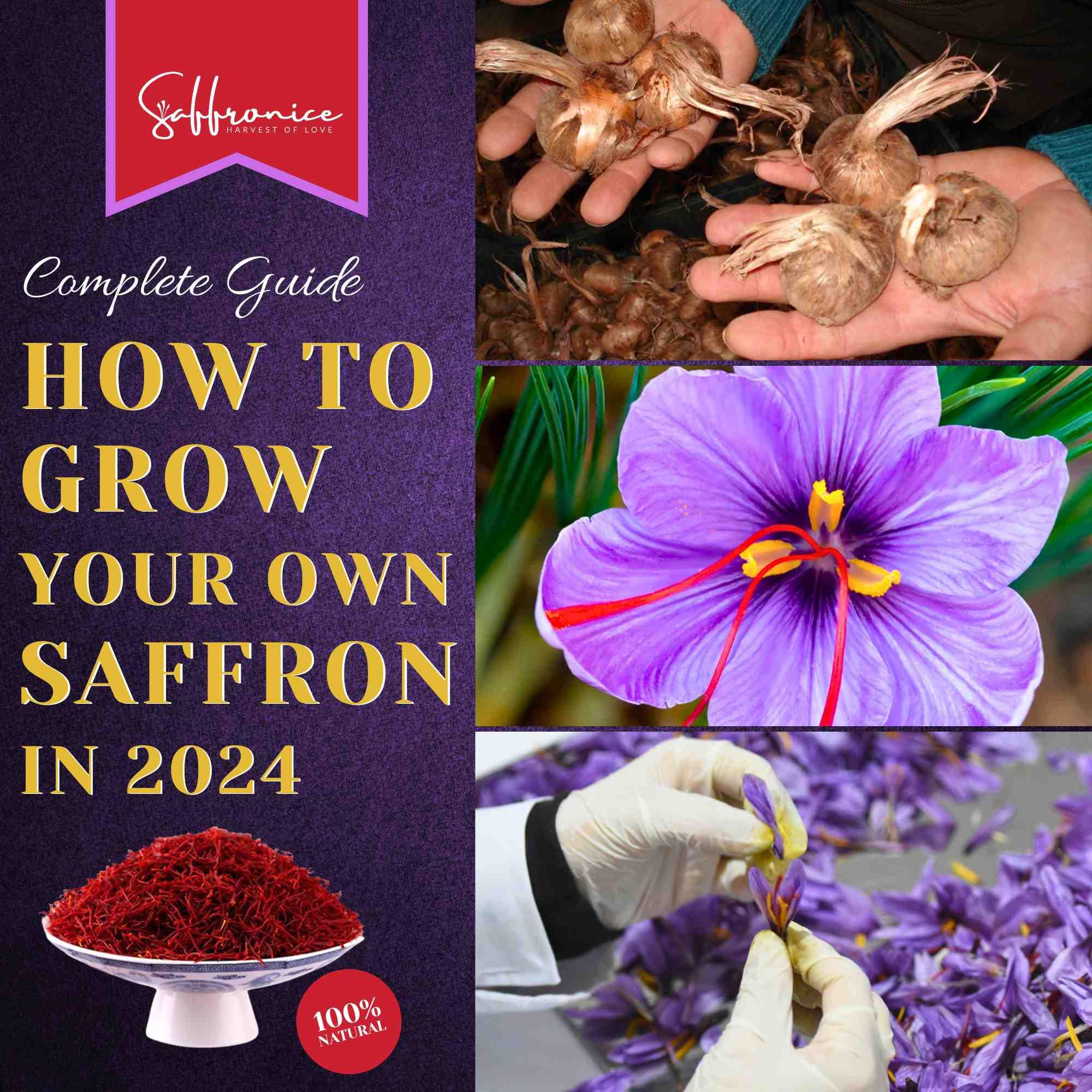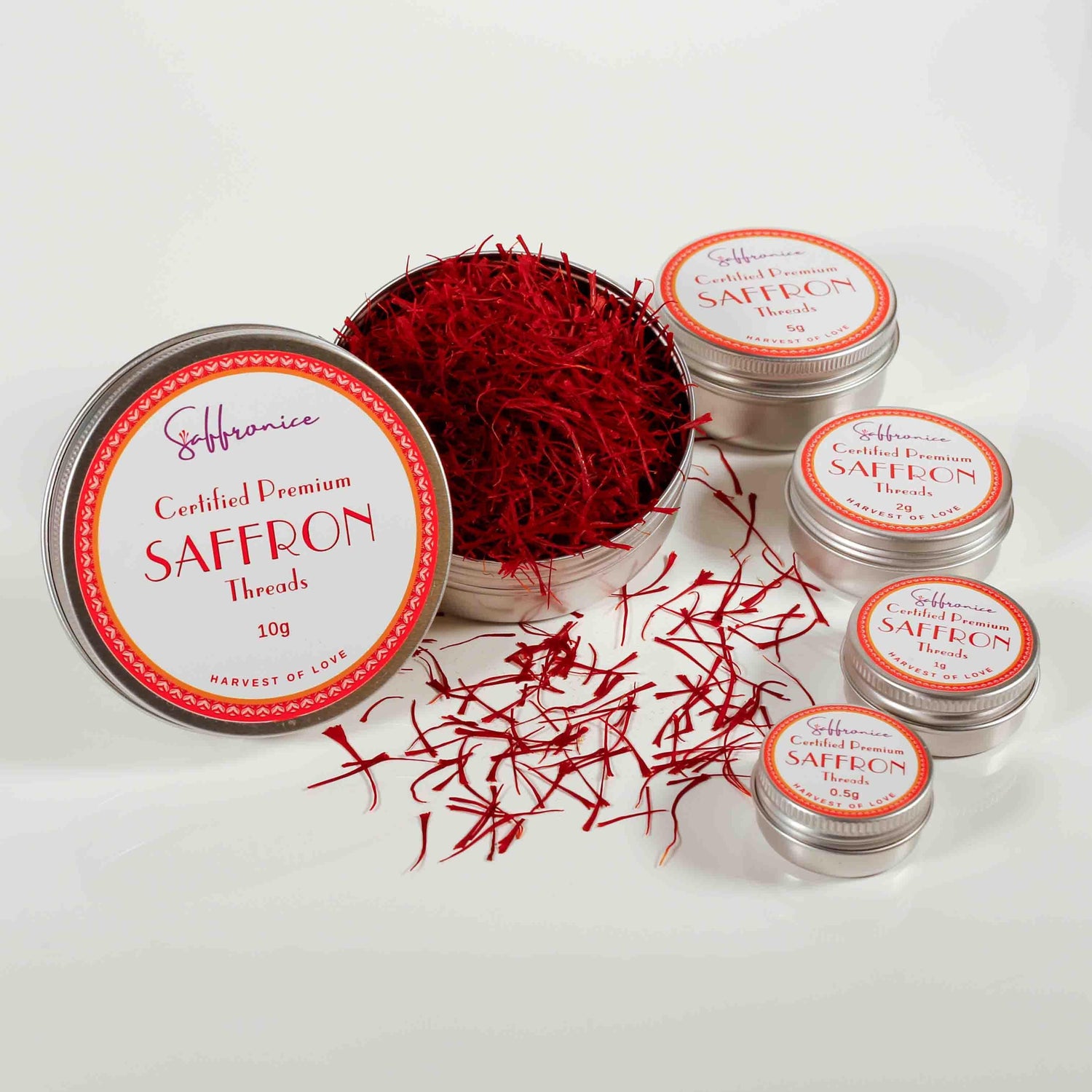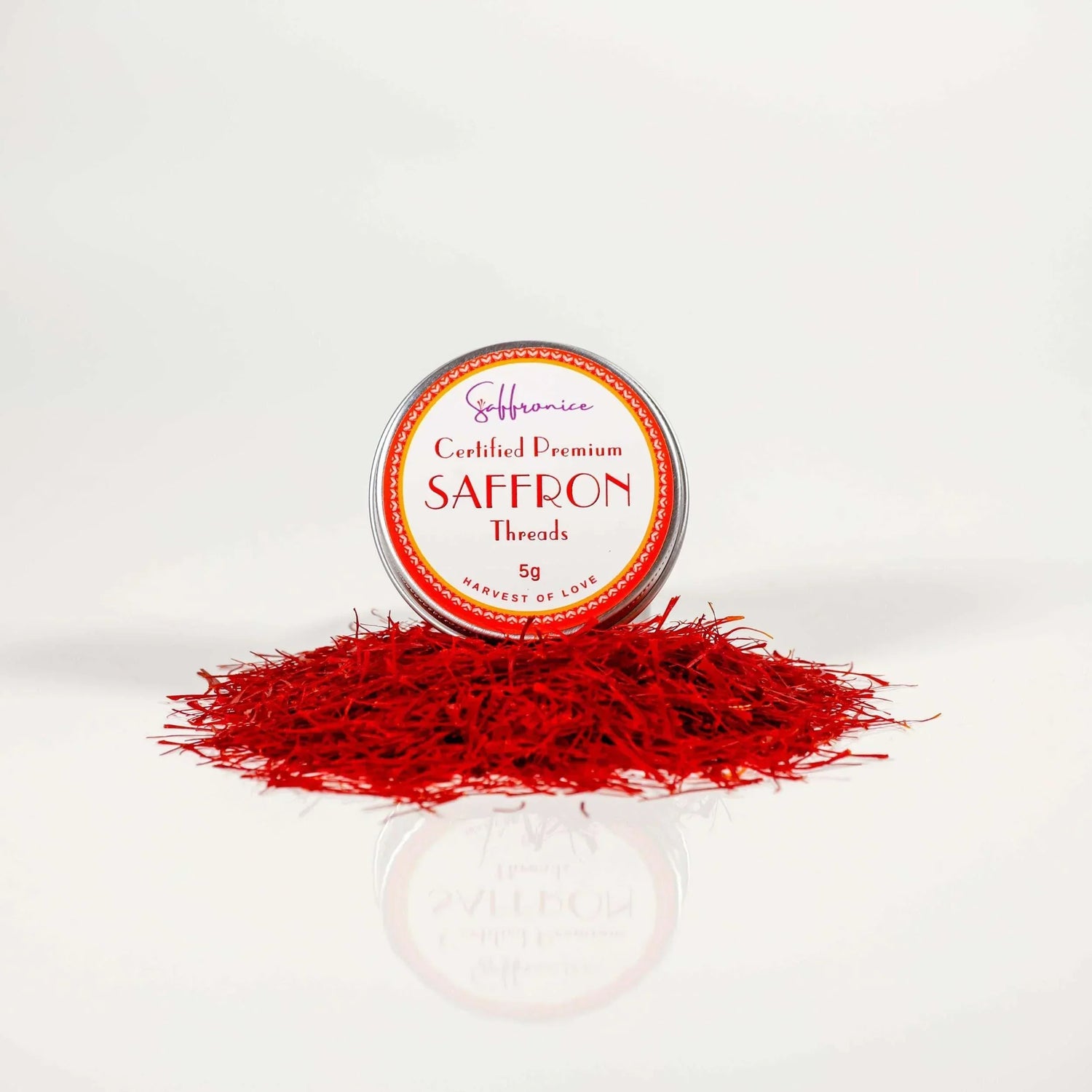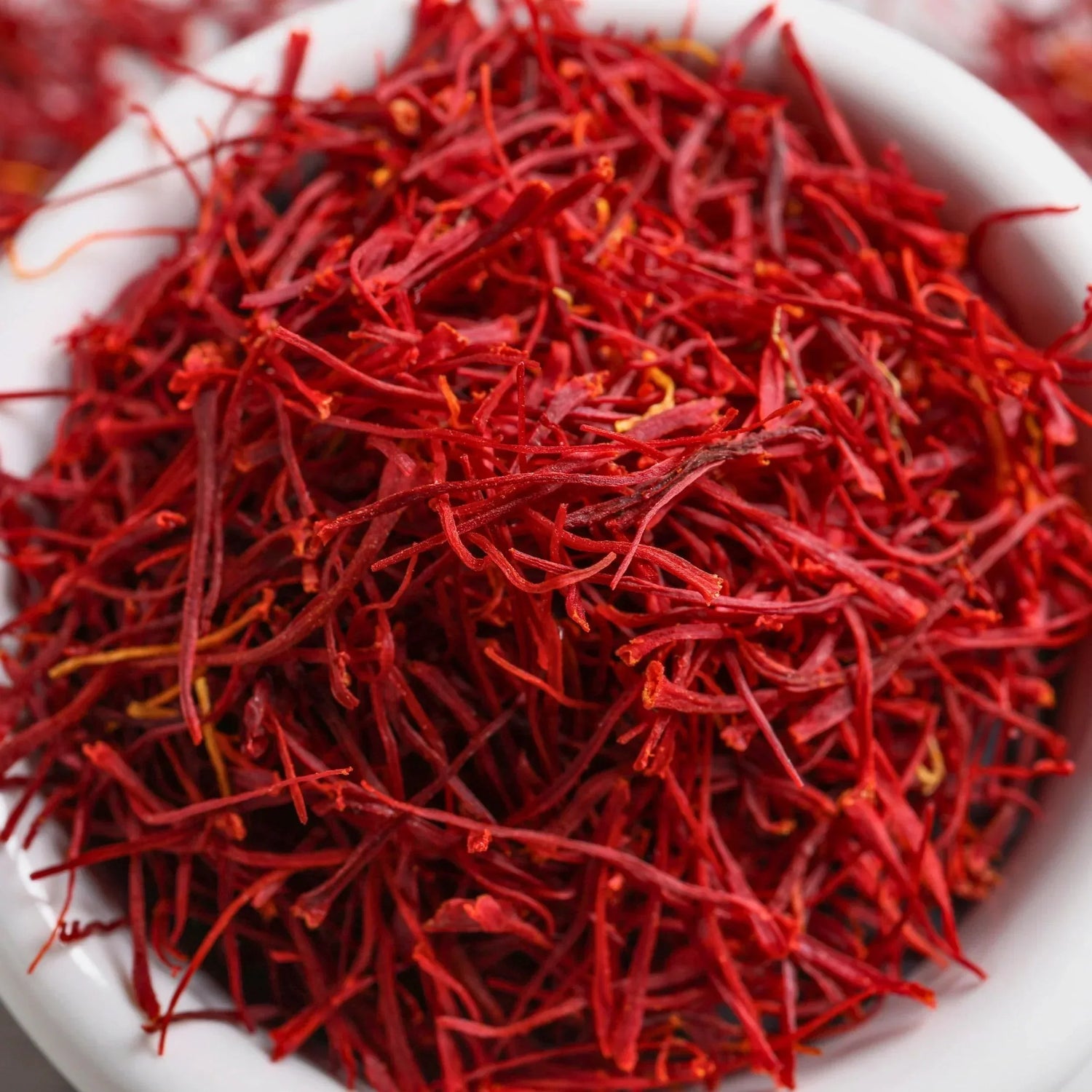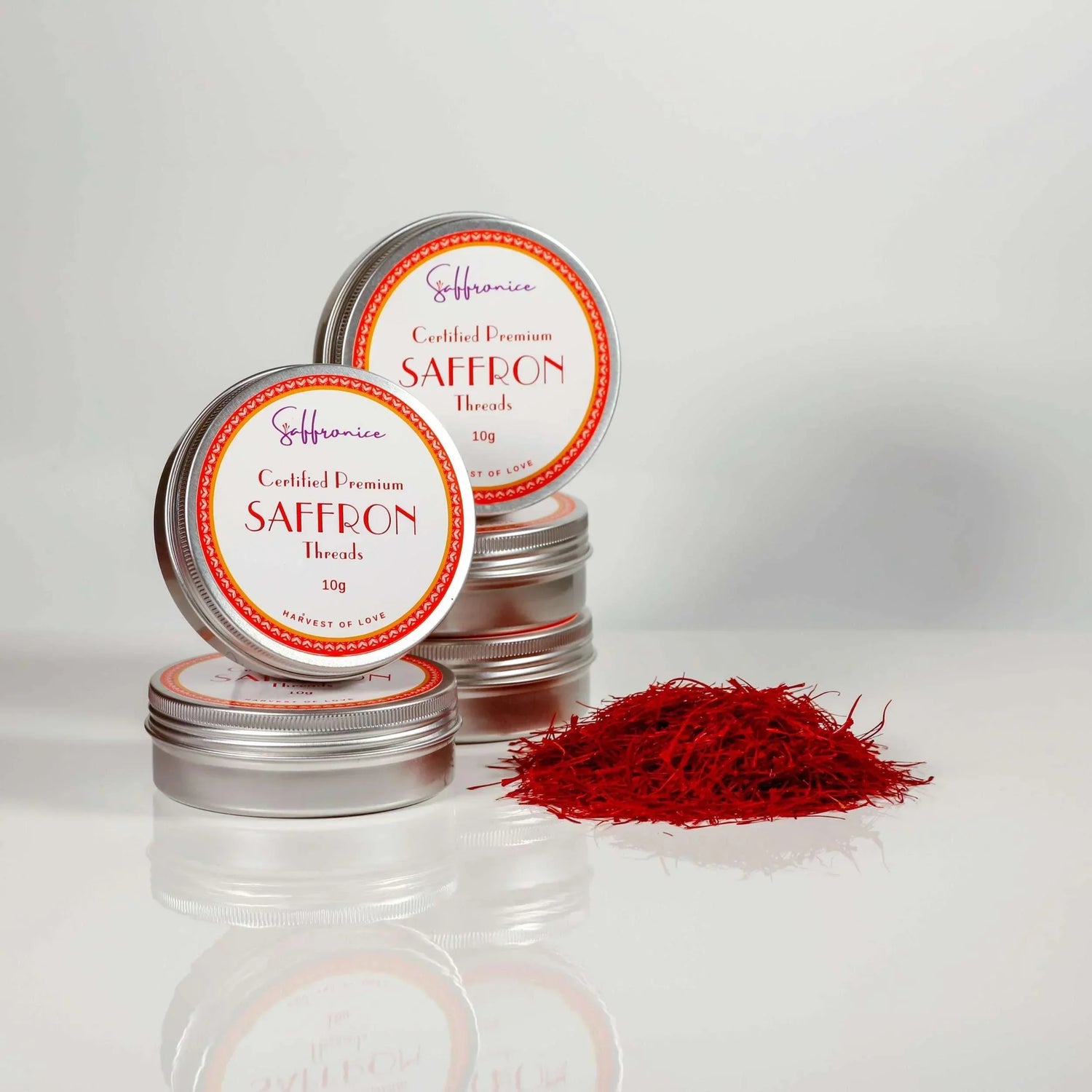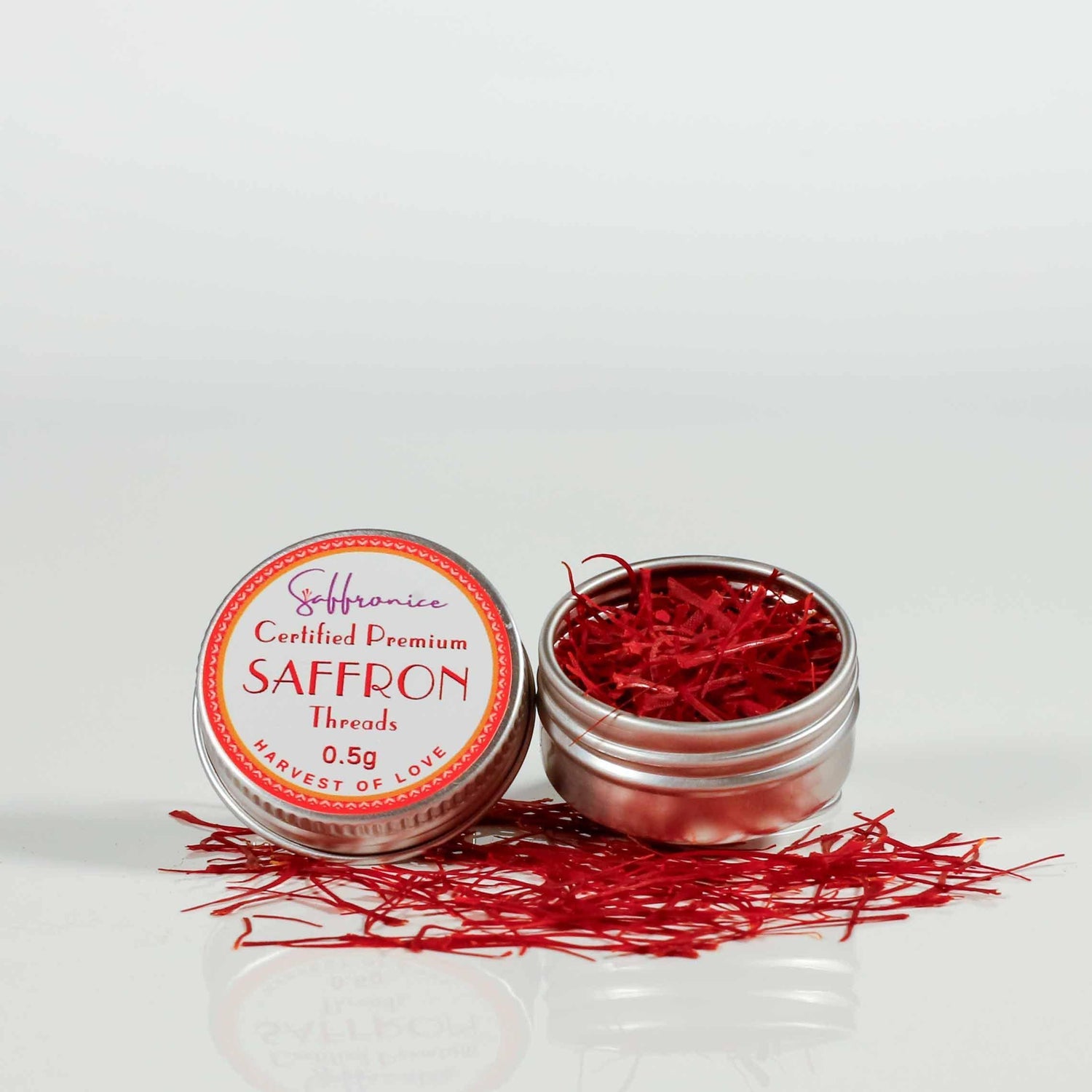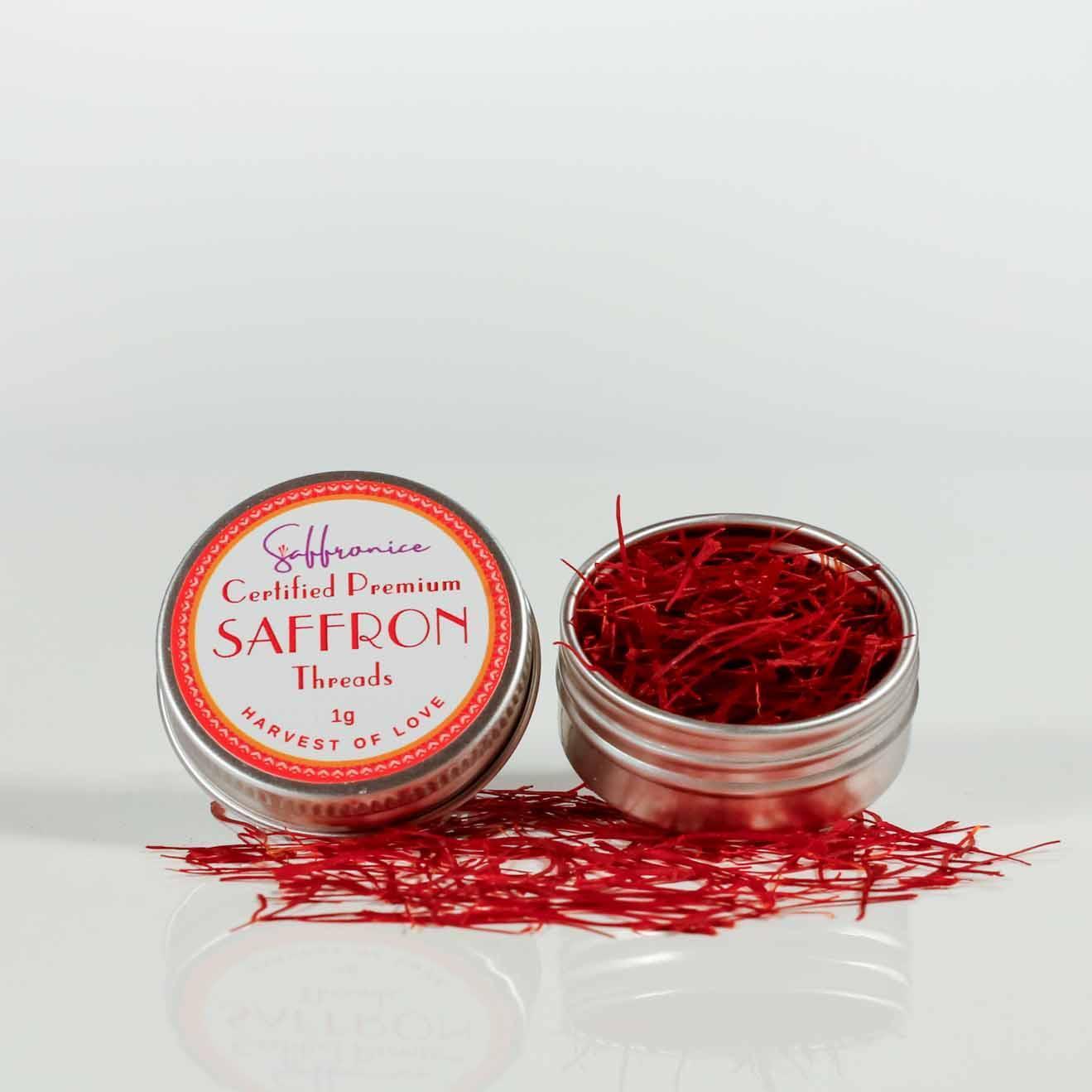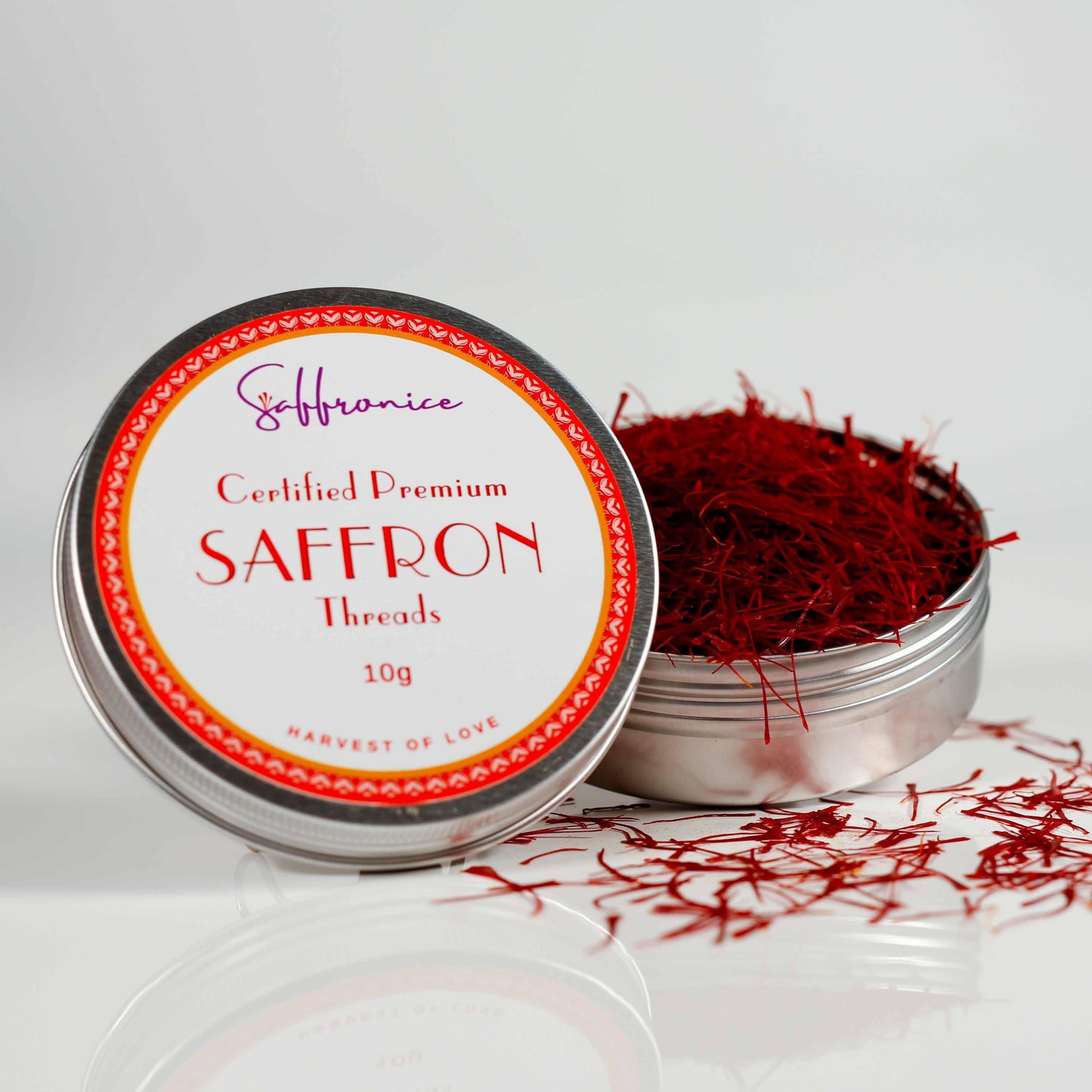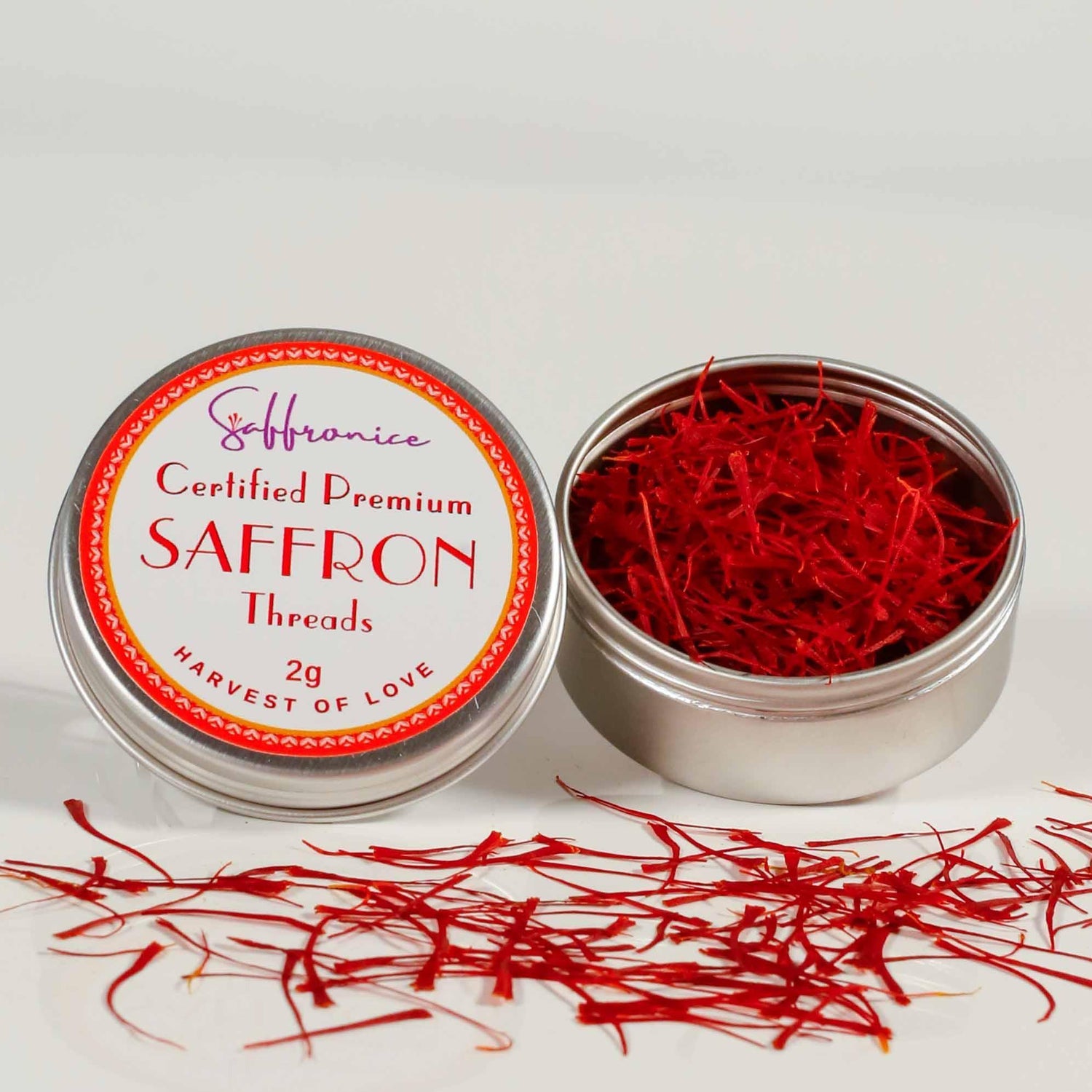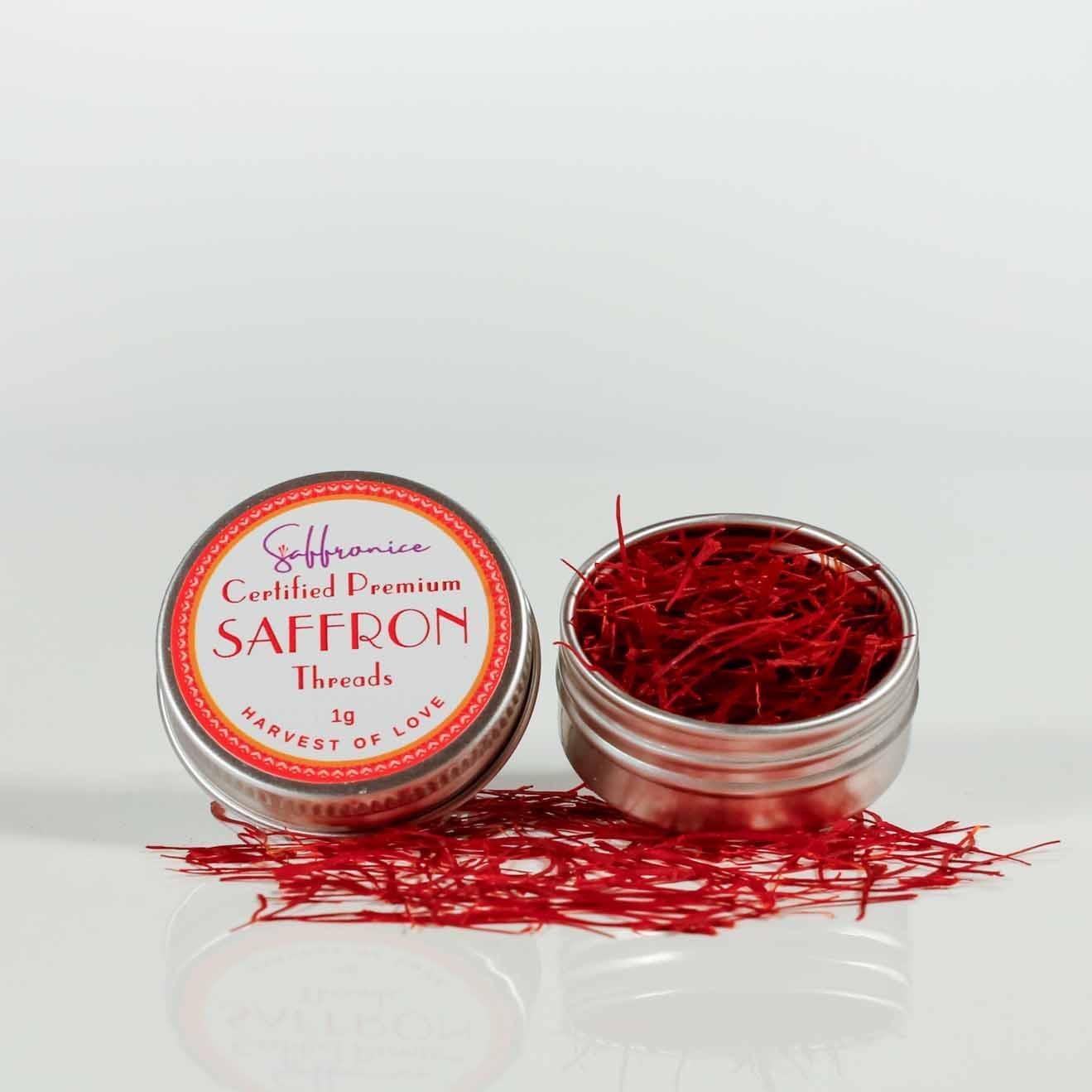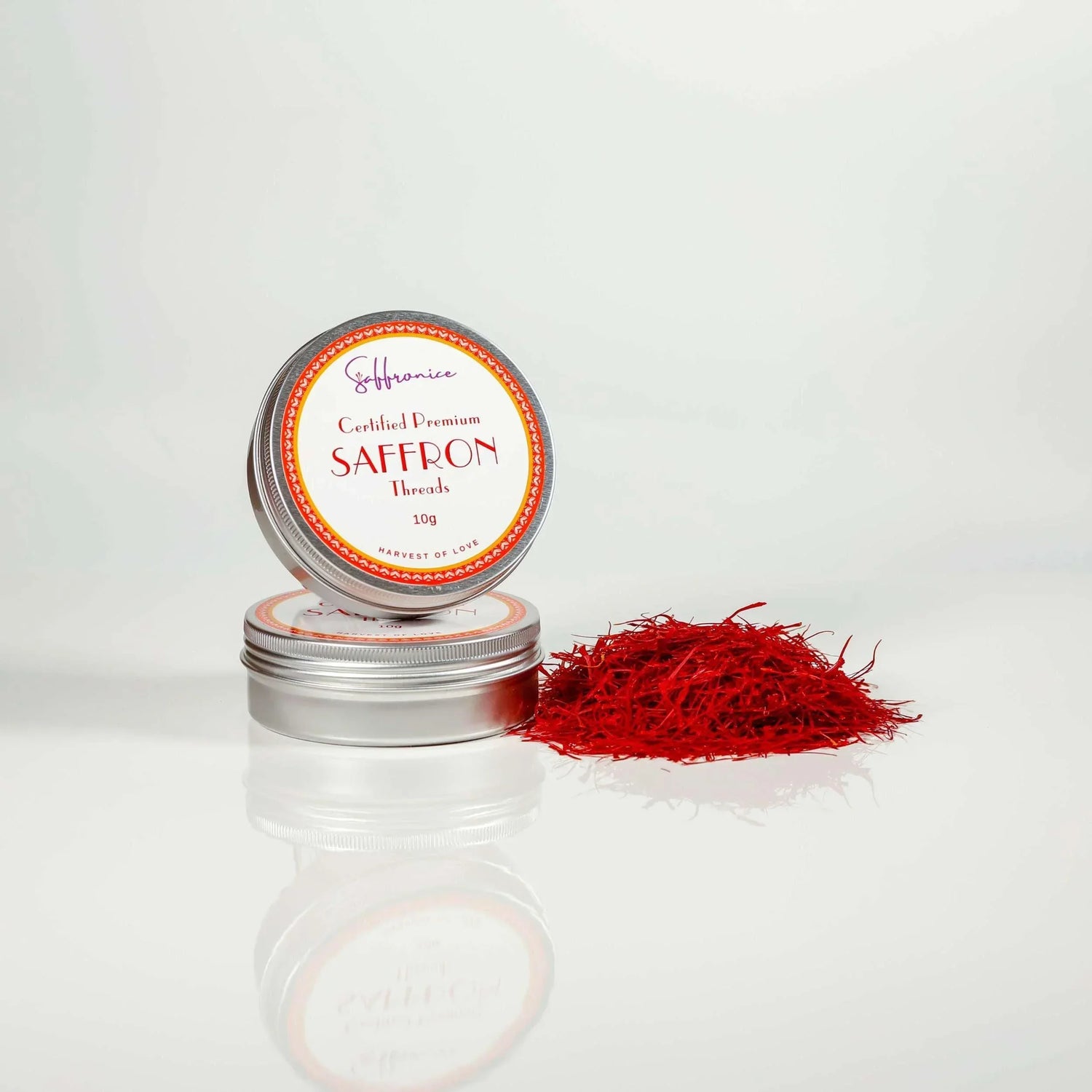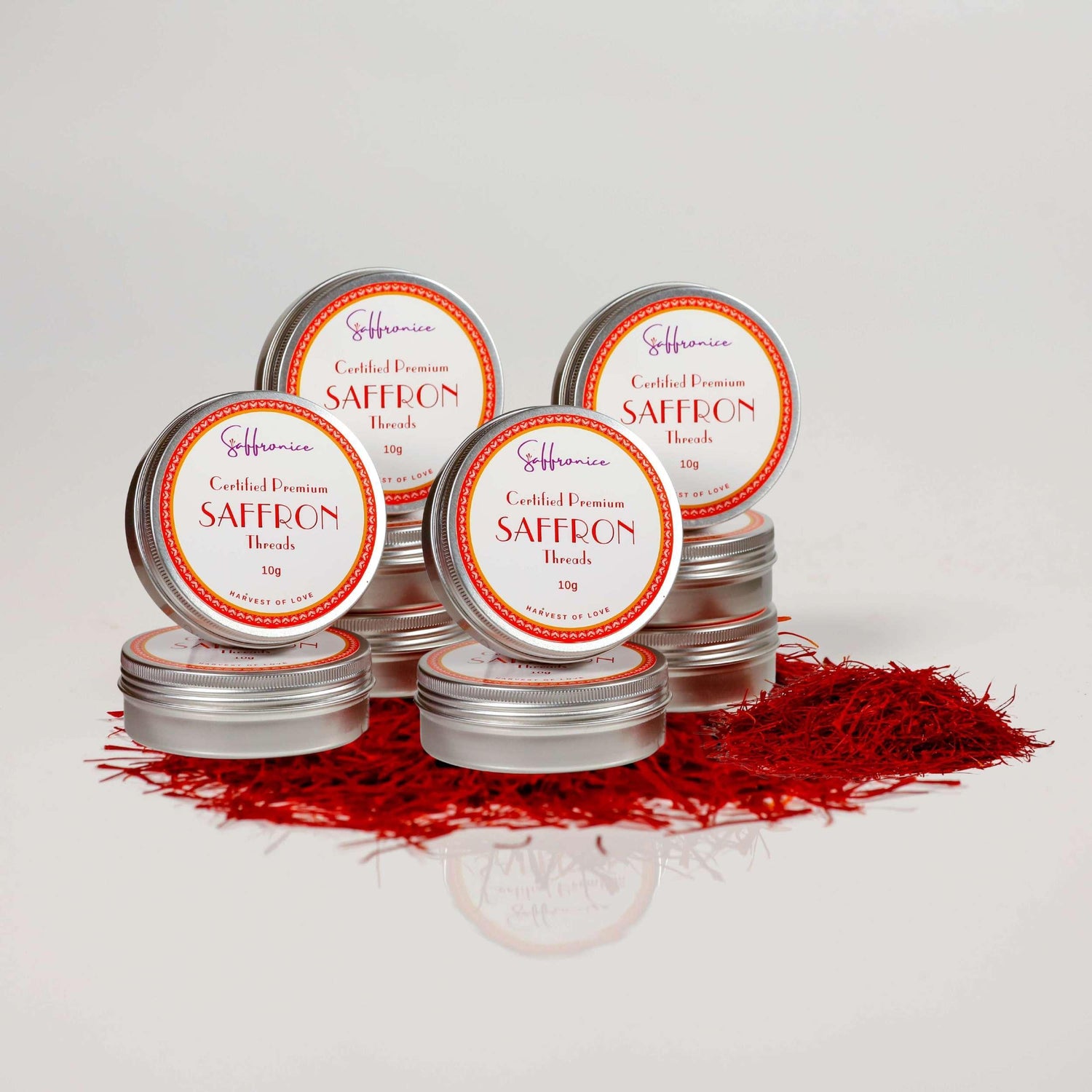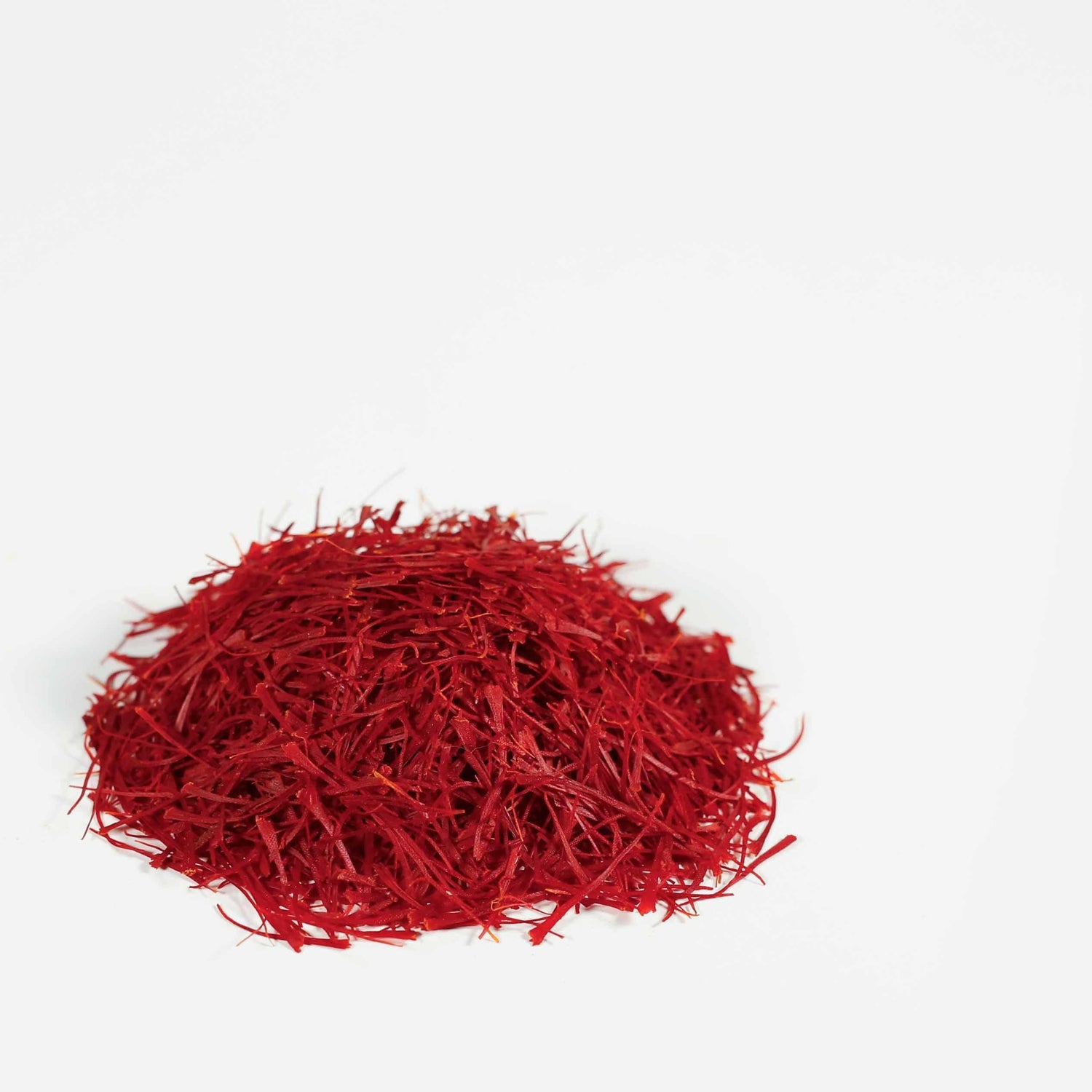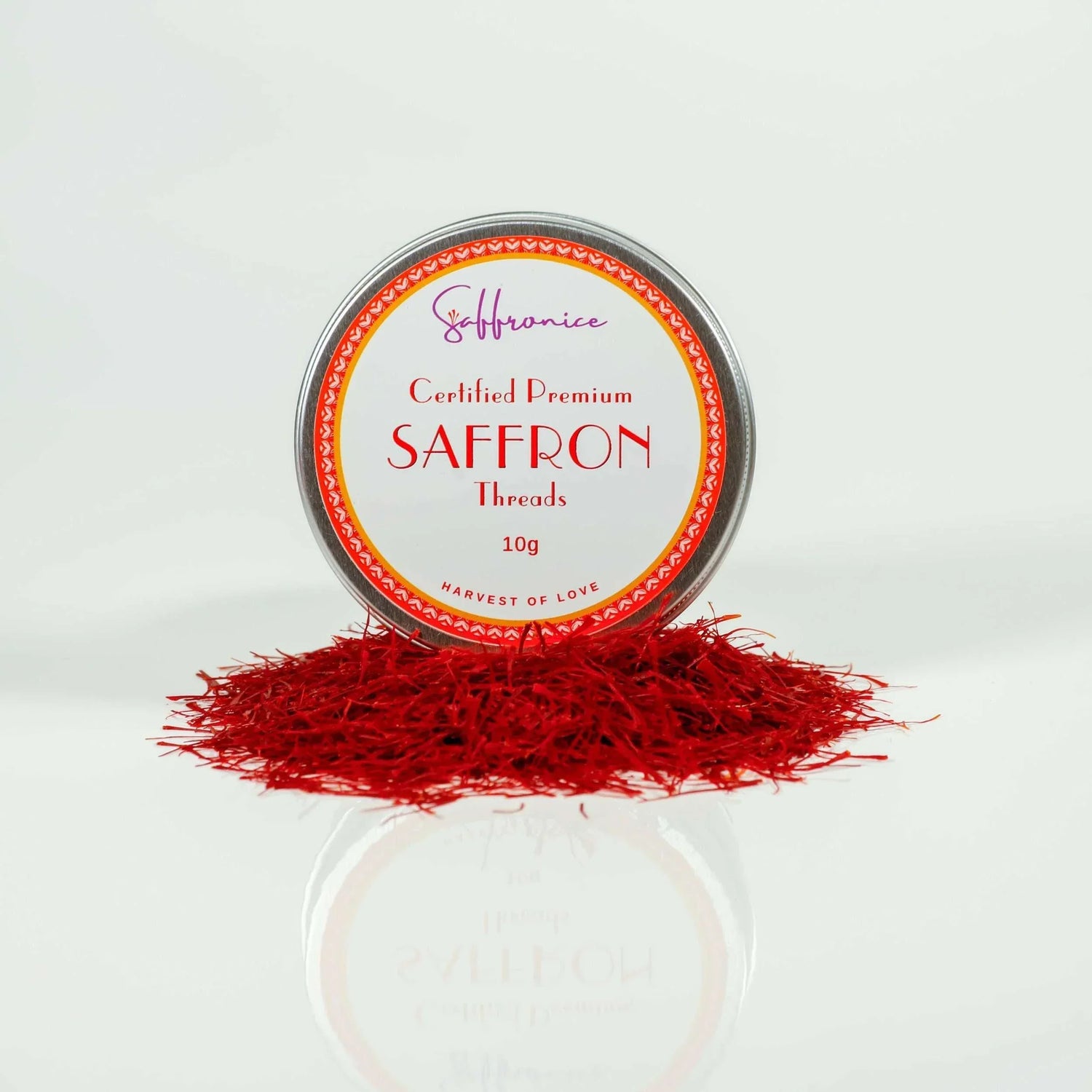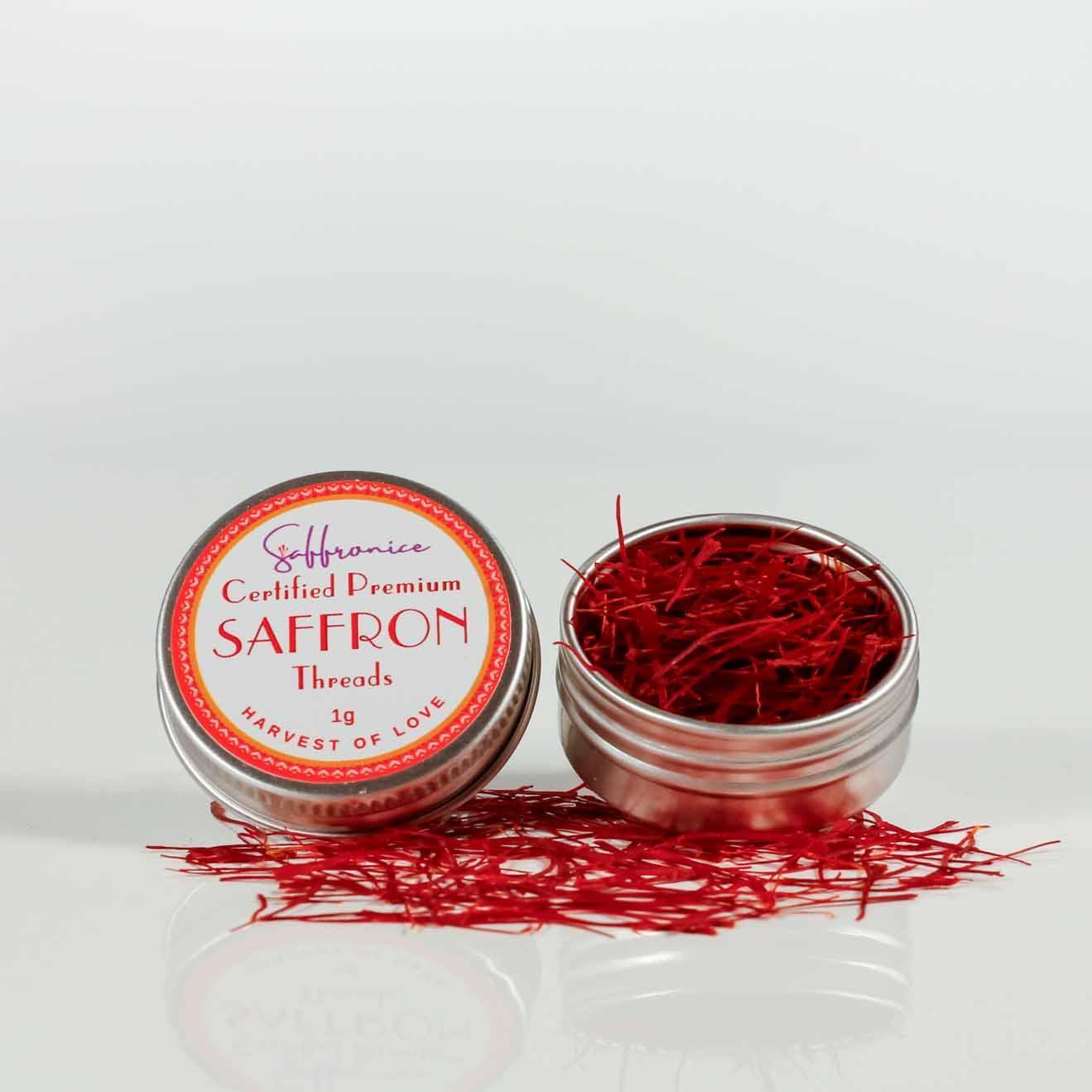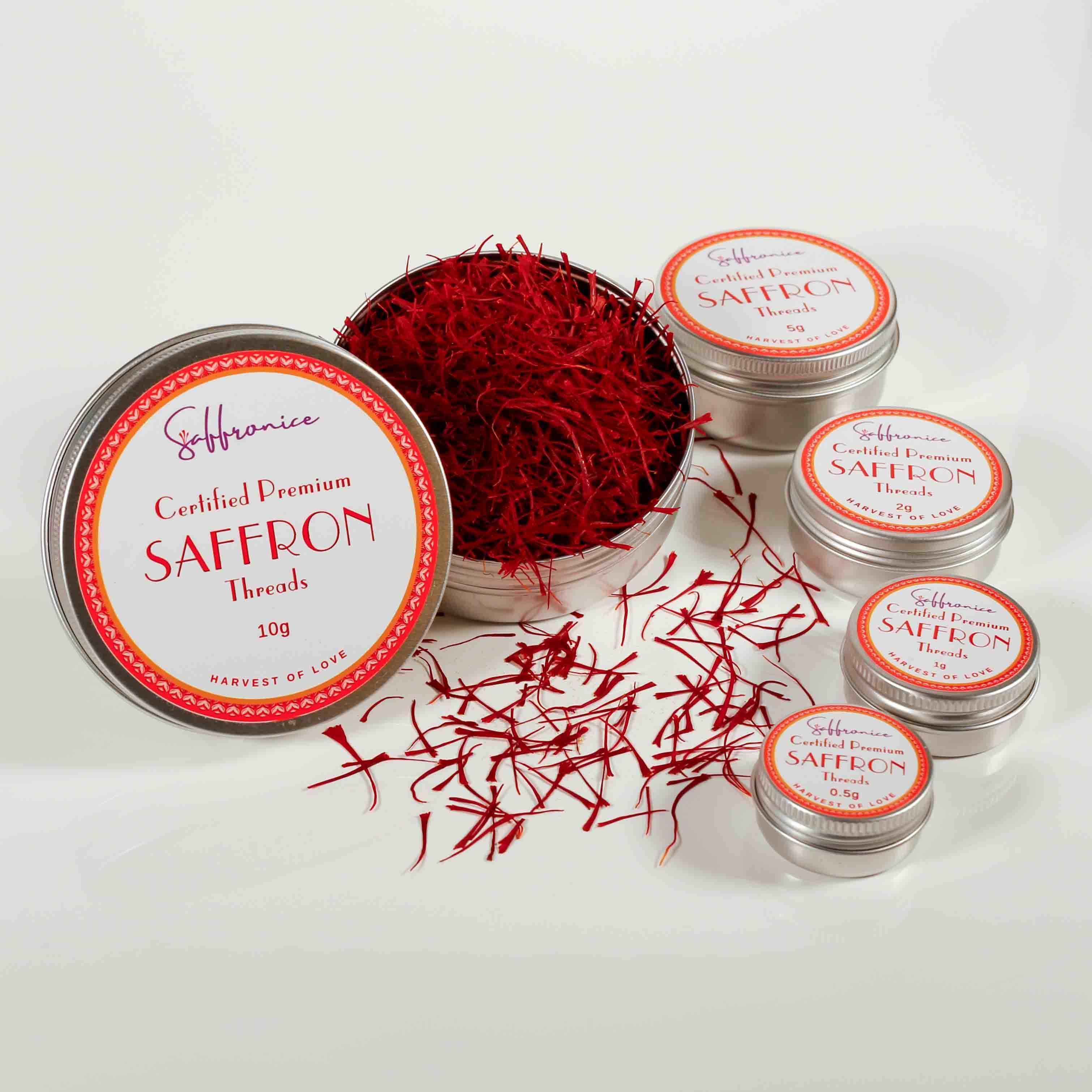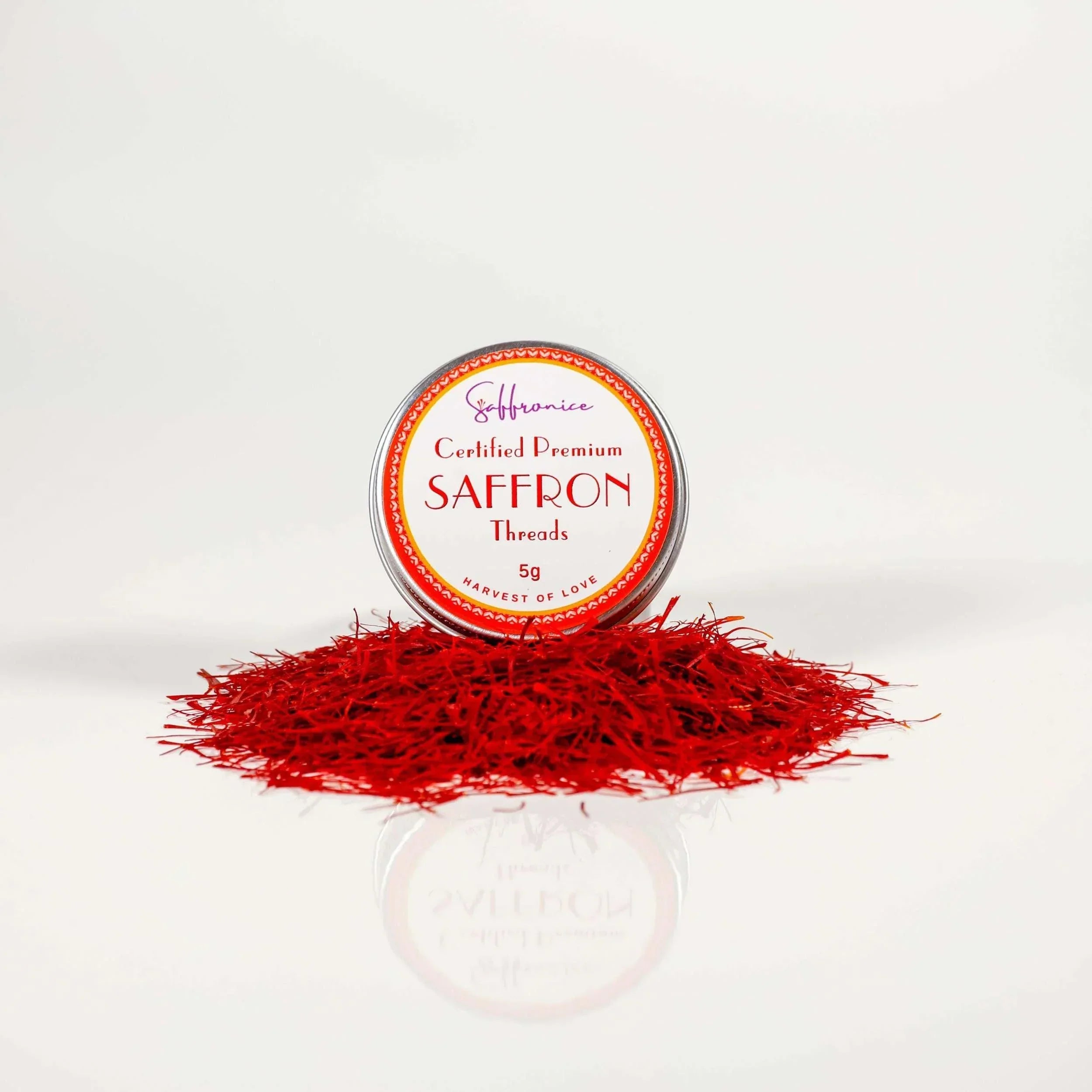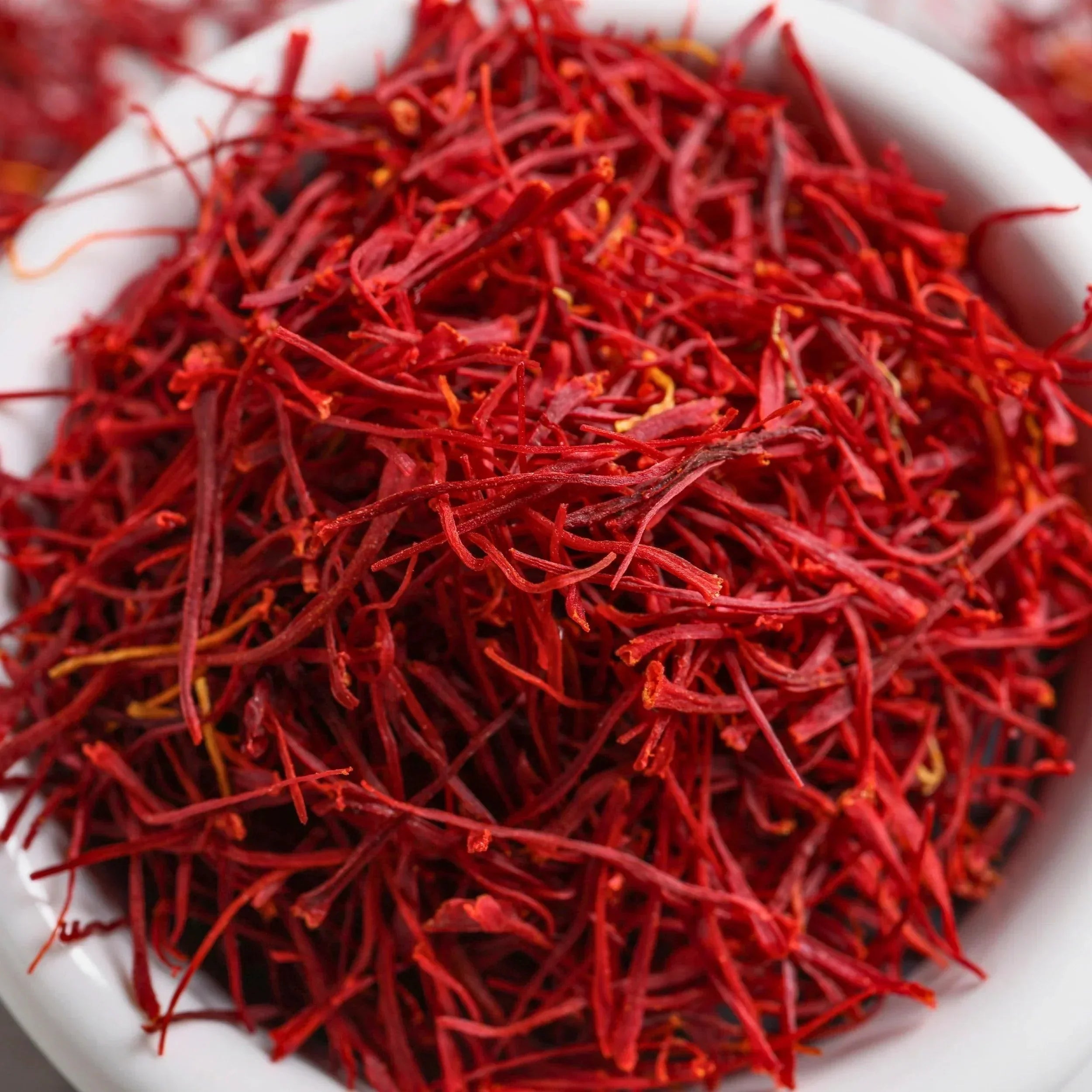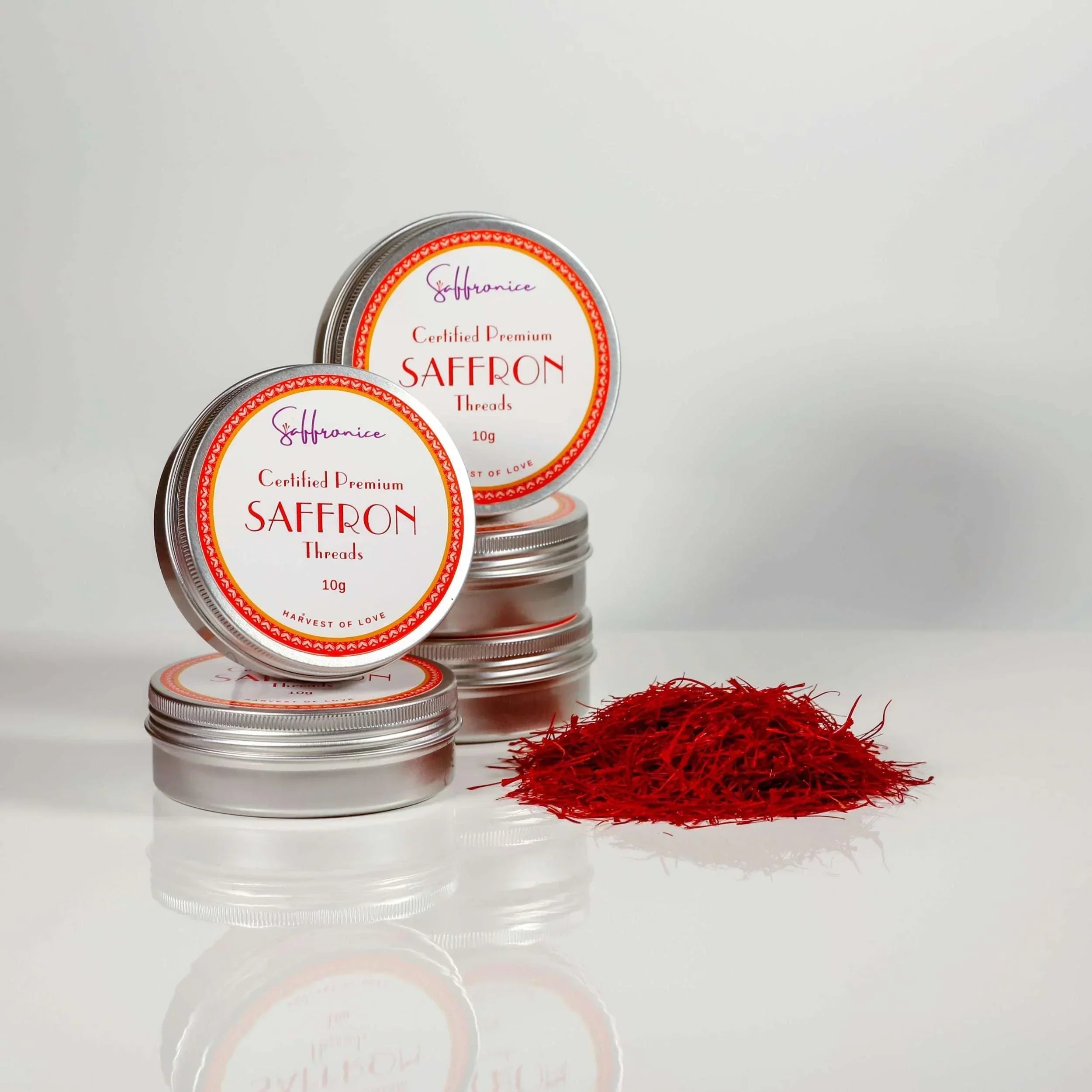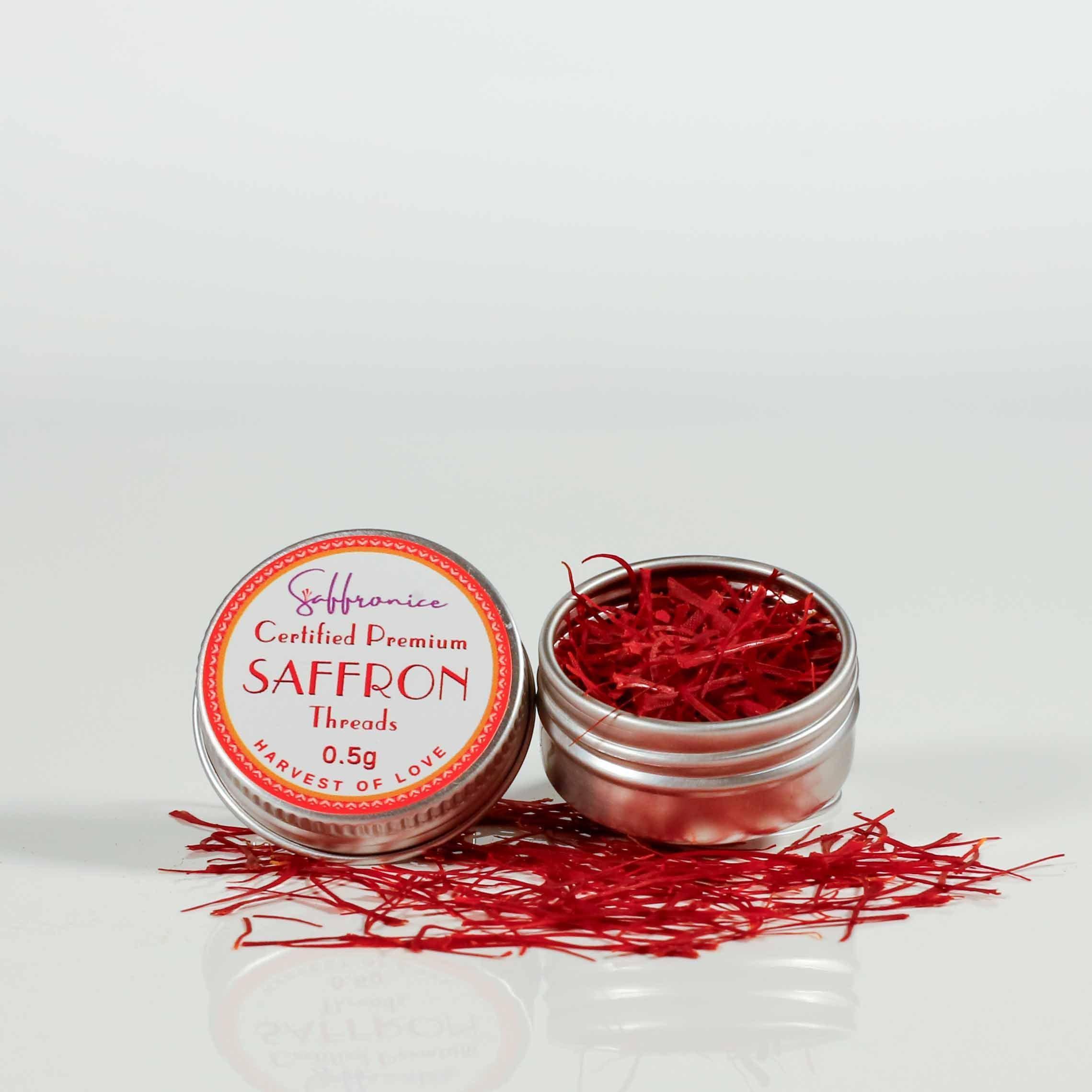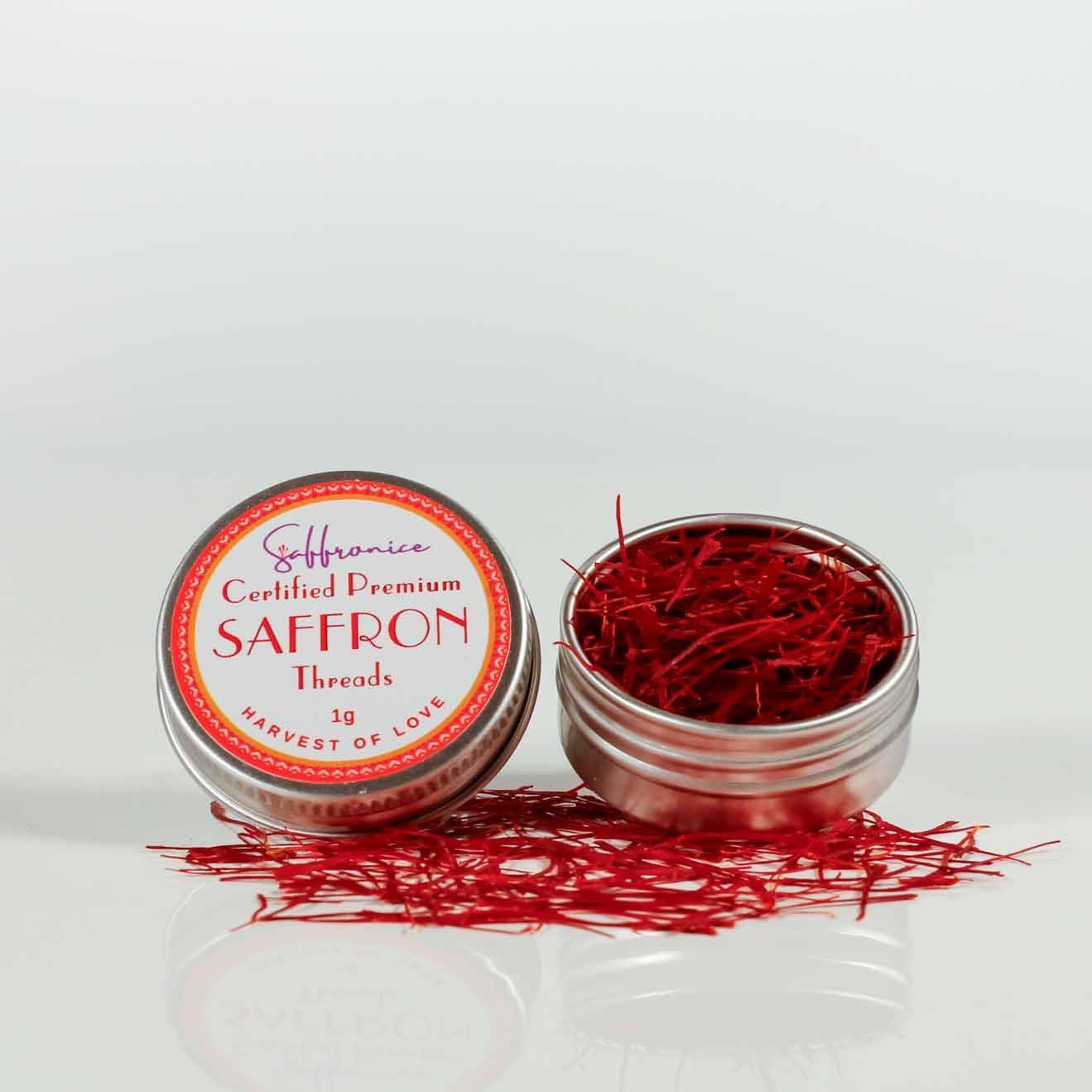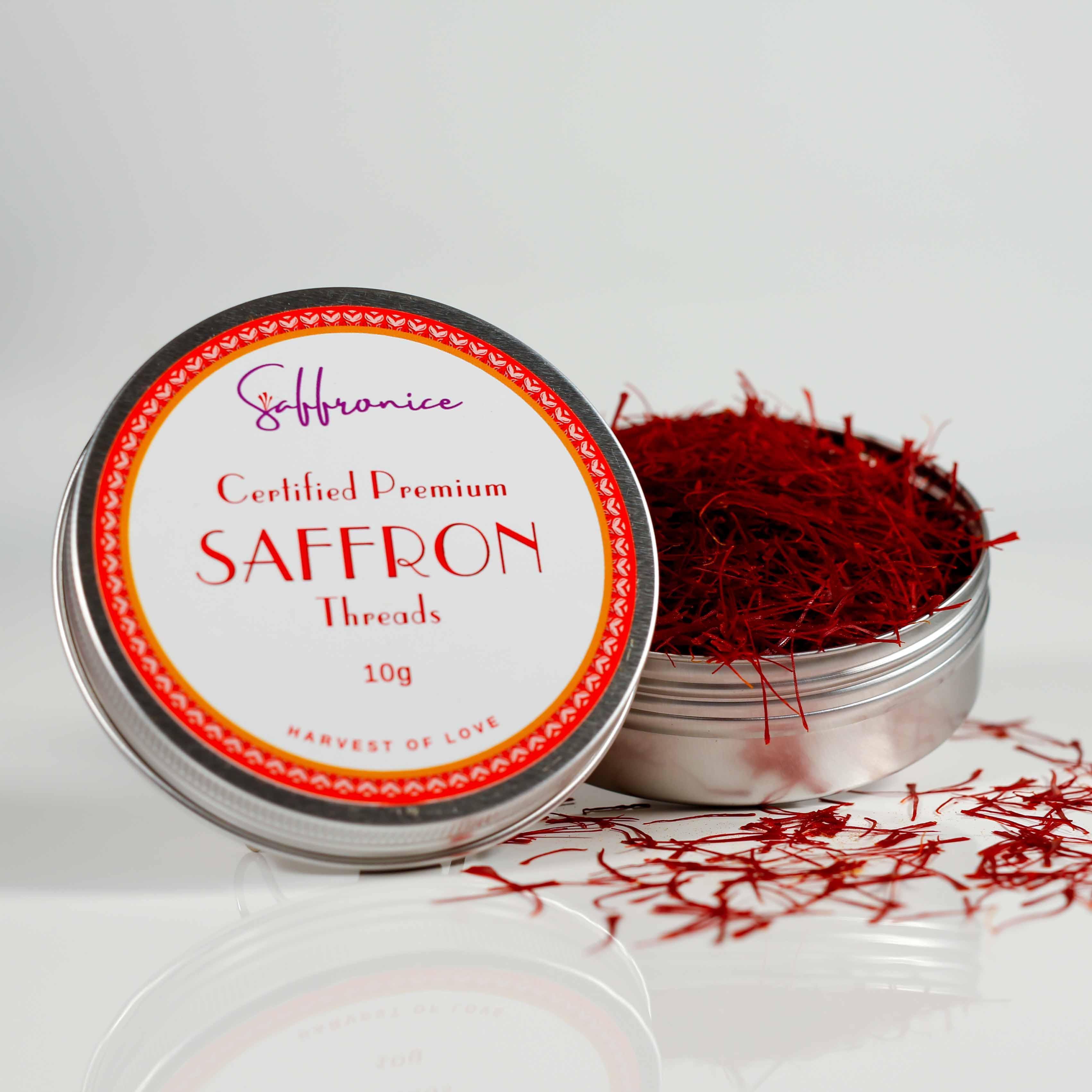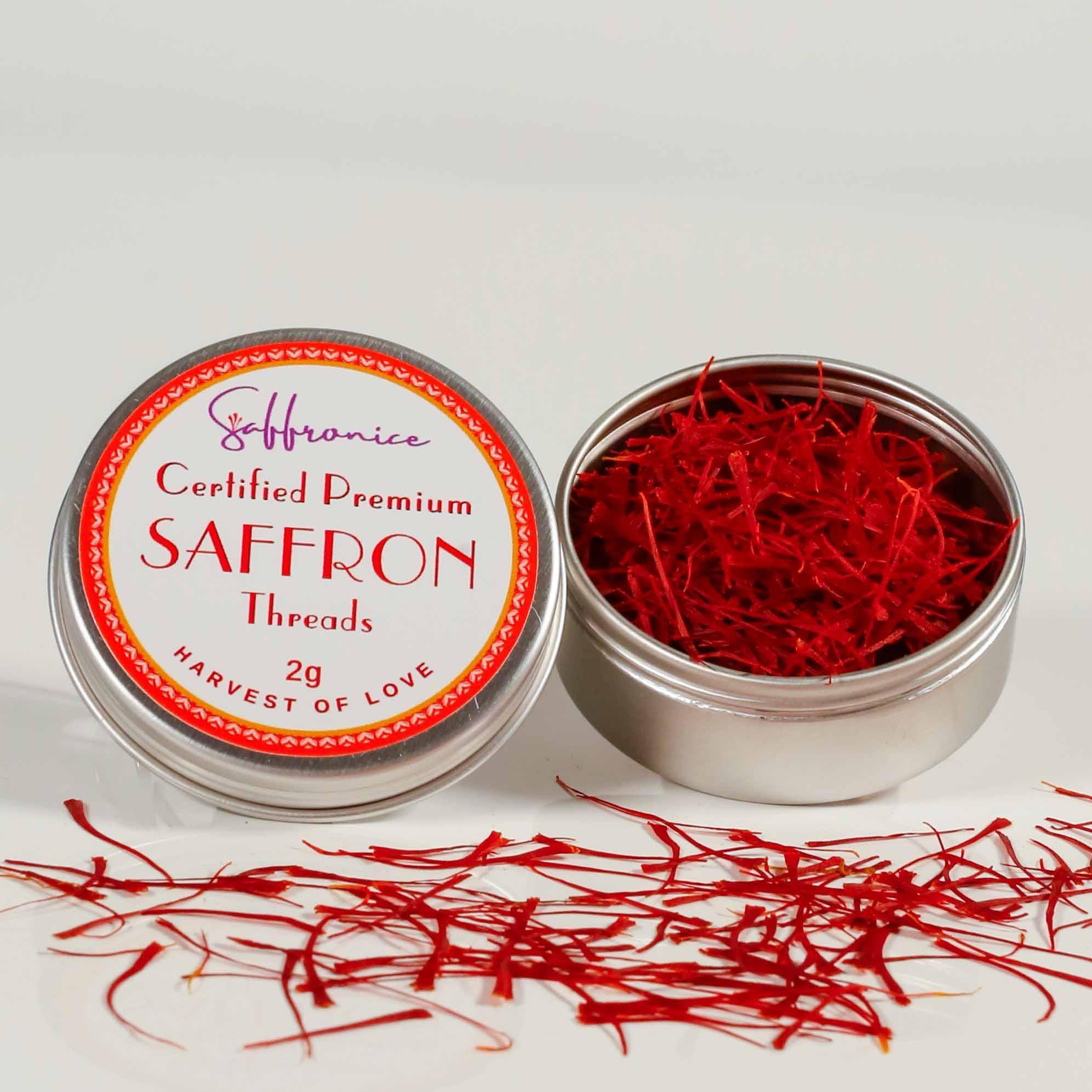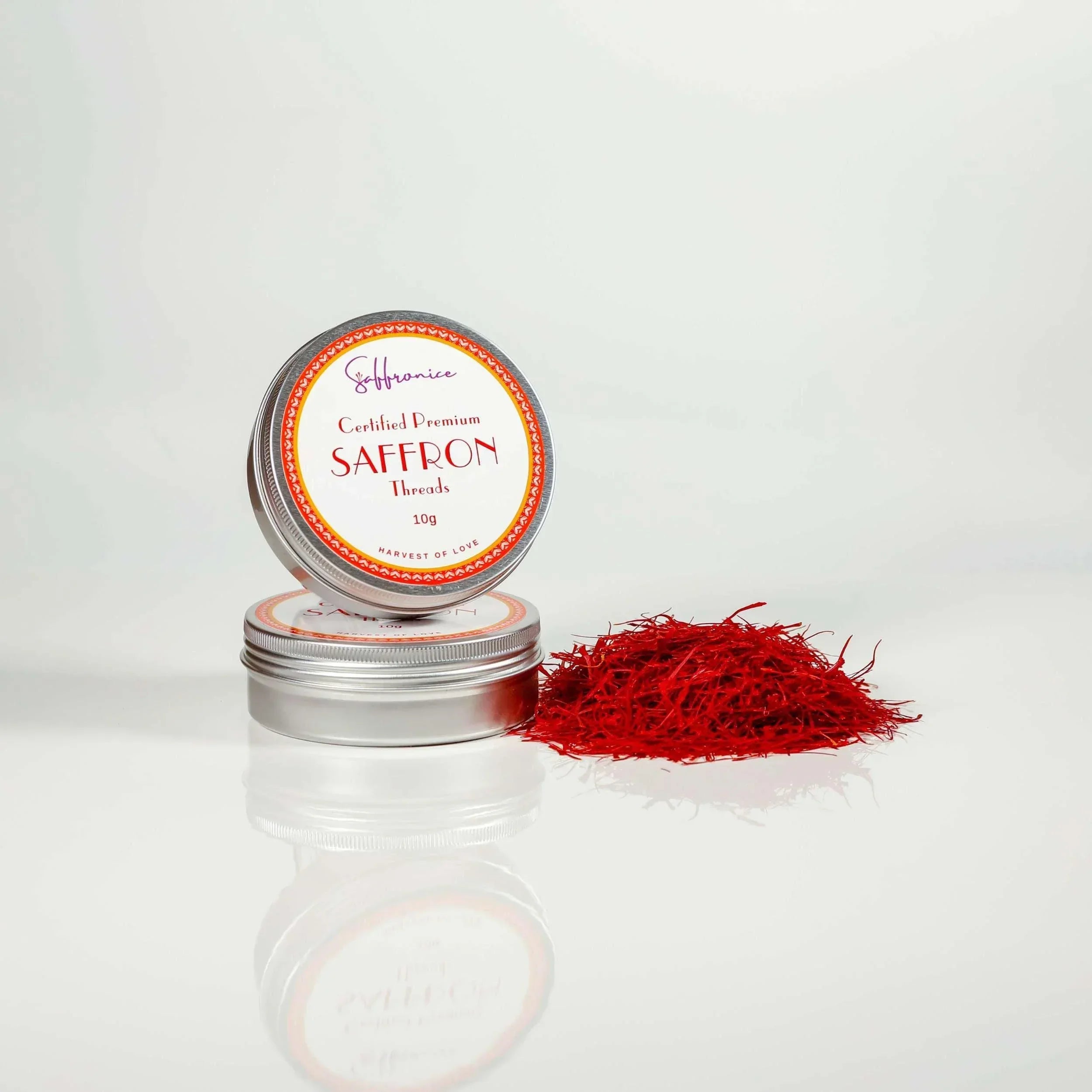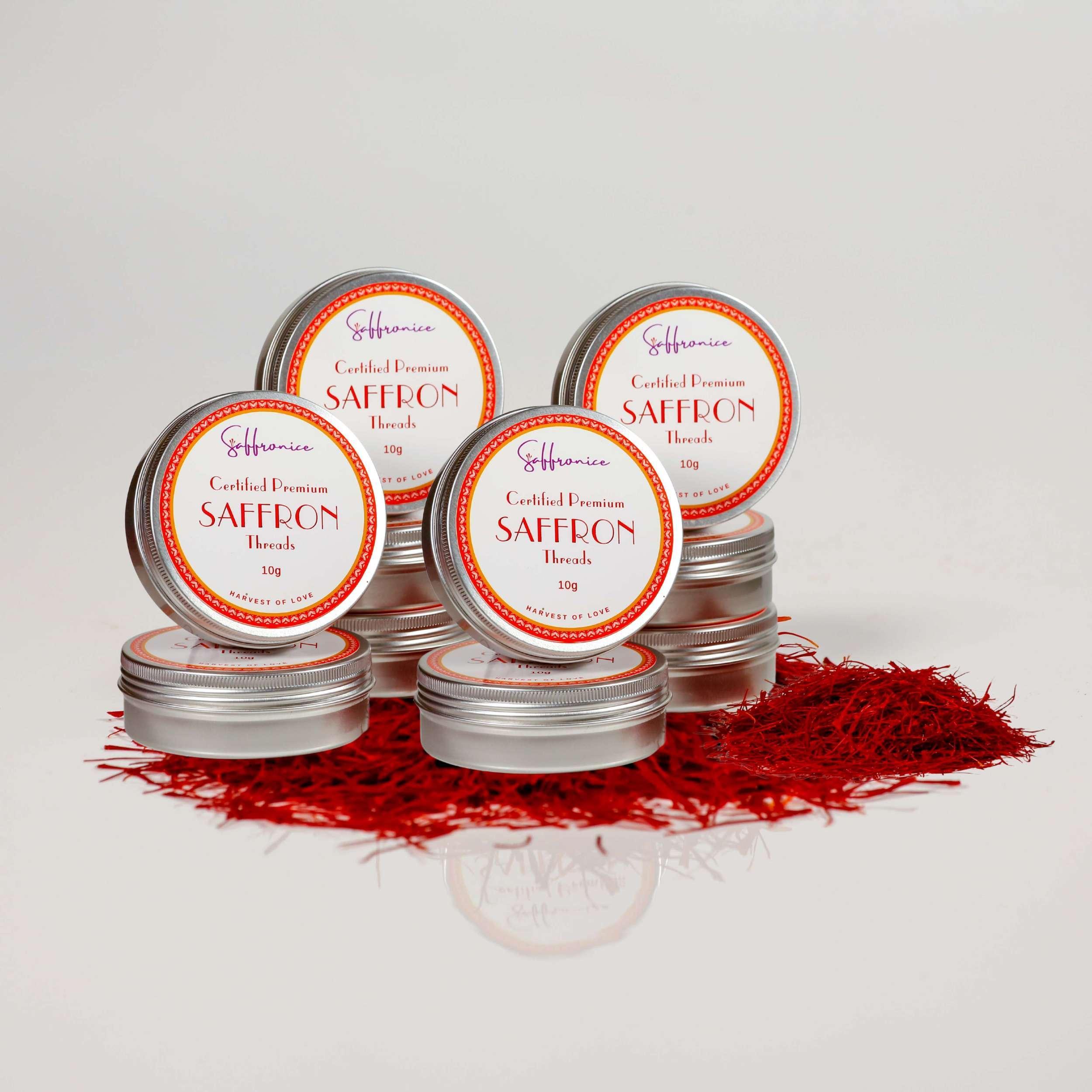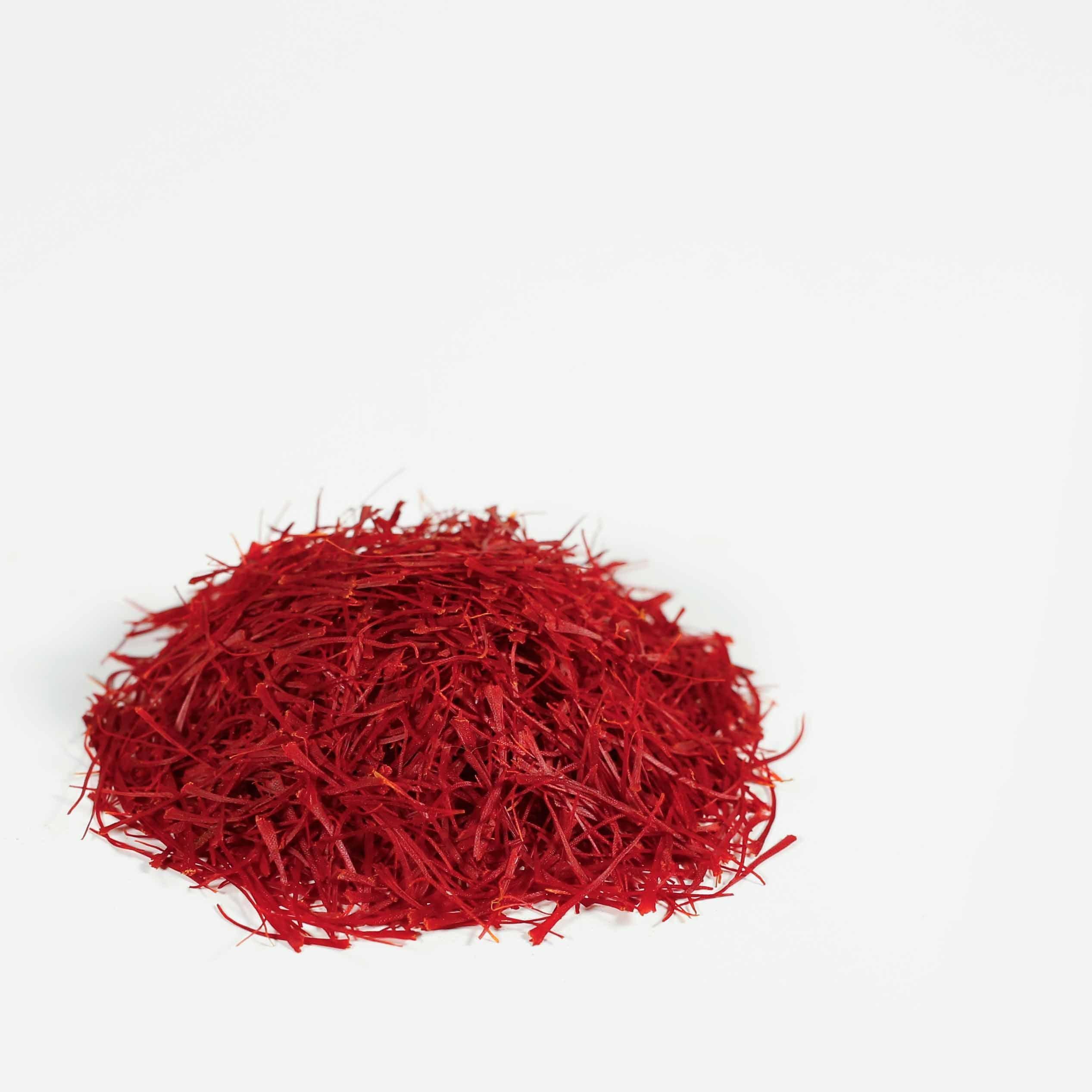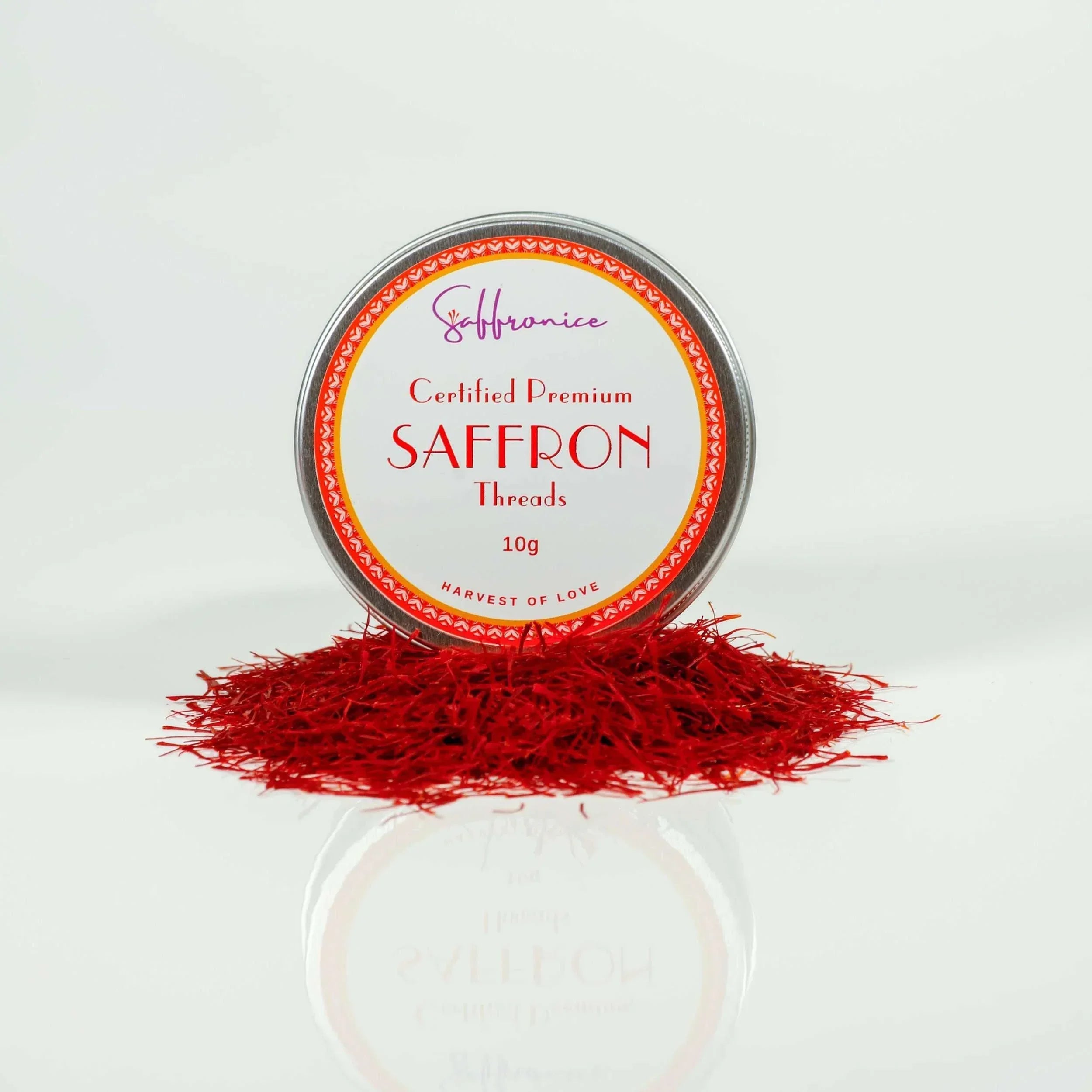Discover the Vibrant Wonders of Planting Your Own Saffron Bulb
Welcome to the vibrant world of saffron cultivation! With its rich aroma and unique flavour, this luxurious spice is a culinary delight and an exciting horticultural adventure. Are you ready to learn how to grow your saffron bulbs and harvest the world's most expensive spice at home? Let's embark on this saffron journey together!
Key Takeaways
- Discover the vibrant wonders of planting your saffron crocus, an ancient spice treasured for its flavour and aroma.
- Learn how to plant, care for and harvest your saffron with tips on soil preparation, pest control & harvesting techniques.
- Enjoy cooking with classic recipes or discover modern culinary uses to make any dish a gourmet delight!

The Allure of Saffron Crocus Bulbs
The captivation of saffron crocus lies in its dual charm that combines beauty and utility. Imagine your fall garden adorned with pretty flowers blooming from saffron crocus bulbs. Not only do they add a vibrant touch to your landscape, but they also give birth to the world's most expensive spice - saffron. The bright red stigmas of these flowers are carefully harvested and dried to create saffron spice, a culinary treasure that can enhance any dish with its unique flavour and aroma.
Yet, that's not all that attracts gardeners to this plant. Many gardeners grow their own saffron crocus for the freshness and flavour of homegrown saffron. The satisfaction of harvesting your own saffron and the cost savings only add to the appeal. After all, why buy expensive saffron when you can grow it yourself?
The Saffron Crocus: A Brief History
Originating from ancient Persia, the saffron crocus, or Crocus sativus, has a rich history. This aromatic flower was widely grown in places like Derbena and Isfahan before spreading to Greece and the Mediterranean. Since ancient times, Saffron crocus has been cherished for its culinary value, medicinal properties, and religious significance.
The Romans are credited for introducing saffron crocus from Persian gardens to Northwestern Europe. The crocus sativus bulbs were also cultivated in Essex during the Tudor era, marking their significance in history. Harvesting saffron from these flowers is labour-intensive, which adds to the spice's value and charisma.
Understanding Saffron: The World's Most Expensive Spice
Nicknamed 'Red Gold', saffron is obtained from the stigmas of the Crocus Sativus blossom. This exotic spice holds the title of being the world's most expensive spice, and rightly so. The process of harvesting saffron is meticulous and labour-intensive. Each flower offers only three stigmas, which are carefully plucked and dried. It takes 75 thousand flowers to produce a single pound of saffron, making it a precious commodity.
The rarity, labour involved, and the high demand for saffron contribute to its high price. Top-quality saffron can cost between $3000 to $6000 per kilogram in 2024. The price is influenced by the quality of saffron and its origin.
Despite the cost, saffron's unique flavour, aroma, and colour make it a sought-after spice in culinary circles worldwide.

Planting Your Own Saffron Bulbs: A Step-by-Step Guide
If the appeal of saffron has aroused your interest, why not try to grow saffron crocus? The process may seem daunting, but with the right tools and guidance, you can transform your garden into a saffron haven. This enhances your landscape with vibrant colours and yields a fresh supply of high-quality saffron for your culinary needs.
Growing saffron crocus involves three main steps: preparing the soil, planting the bulbs, and timing your planting. Each of these steps is crucial to ensure the healthy growth of your saffron crocus and a successful harvest. So, let's delve into the process and help you get started on your saffron-growing journey.

Preparing the Soil
Soil preparation constitutes the initial phase of growing saffron crocus. This step is crucial as saffron bulbs require well-drained soil. Saffron bulbs dislike sitting in damp soil, which can lead to rot. Therefore, you must ensure the soil drains well and contains good organic matter.
In addition to well-draining soil, saffron crocus also needs a sunny spot to thrive. These flowers love basking in sunlight but can also tolerate partially shaded areas. So, when preparing the soil for planting, choose a spot in your garden that receives plenty of sunshine. Plant the bulbs about 2-3 inches (5-10 Cm) deep and 3 inches apart, ensuring their pointy ends face up.

Planting Techniques
With the soil ready, you can plant your saffron crocus bulbs. Planting saffron bulbs is easy if you follow the proper technique. Here's how:
- The bulbs should be planted about 2-3 inches deep.
- If you're planting in beds, maintain a distance of about 3 inches between each bulb.
- If planting in containers, space the bulbs about 4 inches (10 Cm) apart.
This gives each of the plant bulbs enough space to grow and bloom.
The tools you need for planting saffron bulbs include a hand-cultivating fork, a dibber (a pointed wooden tool), and a watering can. Ensuring the bulbs are buried with their pointy ends facing up is also essential. This ensures that the bulbs grow and bloom correctly. So, planting saffron bulbs can be a breeze with the right tools and technique.
Timing Your Planting
Planting your saffron bulbs at the right time is critical. The best time to plant saffron bulbs is between spring and early fall. This timing ensures the bulbs have enough time to establish themselves before the blooming season.
The perfect conditions for planting cold, hardy saffron bulbs are:
- Soil temperature between 20 and 27 degrees Celsius (60-70 Fahrenheit)
- It can be grown in colder regions, such as zones 3-6
- If you live in a colder region, plant the bulbs in a container so that you can bring them indoors before the frost hits
- These bulbs can handle frosts as hard as 14°F (-10'C)
- They actually prefer hot and dry summers.

Caring for Your Growing Saffron Crocus
Cultivating saffron crocus goes beyond just planting the bulbs. It also involves caring for the plants to ensure their healthy growth and a good harvest. This includes proper watering, fertilizing, and controlling pests that may affect the growth of your saffron crocus.
Planting is just the beginning of saffron crocus care. You must ensure they receive the right amount of water and nutrients to grow and bloom. In addition to this, you also need to keep a watchful eye for pests that may harm your plants.
So, let's delve into these aspects of saffron crocus care.
Watering and Fertilizing
One of the critical aspects of caring for your saffron crocus is proper watering. Here are some guidelines to follow:
- After planting, give your saffron crocus bulbs a good watering.
- During the growing season, they need about half an inch (1 Cm) of water per week.
- However, it's important to remember that they don't need any extra water during their summer dormancy.
Fertilizing your saffron crocus is equally essential. When planting the bulbs, mix organic fertilizer into the soil. This provides the necessary nutrients for the bulbs to grow. Once the plants are established, you can fertilize them once a year after they flower. This ensures the plants receive the nutrients needed to grow and bloom.
Pest Control
Pests are a well-known nuisance to every gardener. They can harm your plants and hinder their growth. Saffron crocus is no exception. The most common pests that bother saffron crocus are mites and bulb mites. These pests can affect the bulbs and slow down the growth of your plants.
Controlling pests is an essential part of caring for your saffron crocus. Here are some tips to help you:
- Maintain the proper watering schedule to avoid overwatering, which can attract mites.
- Use organic insecticides like neem oil or pyrethrin spray to control pests.
- Attract beneficial insects and mites to help control pests.
- Regularly monitor your plants for signs of pests and take necessary measures to prevent infestations.

Harvesting Your Own Saffron Spice
After investing time and effort into growing your saffron crocus, the step is to harvest your saffron spice. This is a meticulous process that requires patience and precision. But the reward of harvesting your saffron, the world's most expensive spice, is truly satisfying.
The harvesting process of saffron entails selecting the optimal time, employing the proper techniques, and understanding the best ways to store your harvested saffron. Each of these steps is crucial to ensure the quality of your saffron. So, let's delve into each of these aspects of saffron harvesting.
Picking the Right Time
Harvesting saffron is all about timing. The best time to harvest saffron is in the morning, ideally before the sun rises. This is because sun exposure can degrade the quality of the saffron stigmas. So, set an early alarm to start your saffron harvest.
The right time to harvest saffron also depends on the appearance of the flowers. The saffron crocus flowers start blooming in the fall. When you see the long, bright orange-red stigmas emerging from the flowers, that's when they're ready for harvest. So keep a close eye on your flowers to determine the perfect time for your saffron harvest.

Proper Harvesting Techniques
Harvesting saffron requires care and precision. Pluck the flowers from the plant. Each saffron crocus flower has three stigmas, which are the parts that are harvested to produce saffron. To reap the stigmas, follow these steps:
- Gently open up the flower.
- Carefully pull out the three-part red stigma from the stem of the flower.
- This should be done carefully to avoid damaging the stigmas.
Once you have pulled out the stigmas, lay them on a paper towel and allow them to dry thoroughly in a dark, warm place for a few days. This drying process is crucial as it helps enhance the Saffron's flavour and aroma.
Do not use a dehydrator or microwave for quick-drying; this will destroy the biocomponents of saffron.
Storing Your Saffron
Once you've harvested and dried your saffron, it's time to store it. Proper storage is crucial to maintain the flavour and potency of your saffron. The dried stigmas should be stored in an airtight container, such as an airtight metal container. This protects the saffron from moisture and light, which can degrade its quality. Because dried saffron is sensitive to UV light, it's best to use light-resistant containers. Avoid plastic containers, as saffron can pick up the smell of plastic.
When choosing a storage spot, the door section of the refrigerator is the best; if that is not possible, opt for a cool, dark spot. This could be a pantry or a kitchen cabinet. Avoid storing your saffron in a place that experiences temperature fluctuations, like near the oven. With the right storage conditions, your homegrown saffron will retain its flavour and aroma for a long time, up to one year.

Enjoying the Fruits of Your Labor: Cooking with Saffron
Having harvested and stored your saffron, you can now savour the fruits of your hard work. Saffron is an adaptable spice that can enhance a wide range of dishes. Whether you're a fan of traditional recipes or modern cuisine, there's a saffron dish for you.
Using saffron in cooking becomes an exhilarating culinary journey. With its unique flavour and rich aroma, saffron can transform an everyday dish into a gourmet delight. Let's explore ways you can use your homegrown saffron in your kitchen.
Classic Saffron Recipes
Saffron has a special place in many traditional cuisines. From Spanish paella to Persian rice dishes, saffron is a crucial ingredient that gives these dishes distinctive taste and colour. The rich aroma and exotic flavour of saffron add depth to these dishes and elevate them to a new level.
In addition to these classic saffron recipes, there are many other ways to incorporate saffron into your cooking. Here are some ideas:
- Use saffron in soups, stews, and risottos
- Add saffron to desserts like cakes, cookies, and ice cream
- Infuse saffron in drinks like tea or cocktails
- Use saffron in marinades for meat and fish
The possibilities are endless when you have your fresh, high-quality saffron supply, especially from your garden.

Modern Culinary Uses
Beyond traditional recipes, saffron is also making waves in contemporary cuisine. Chefs worldwide are finding new and innovative ways to incorporate this luxurious spice into their dishes. Some examples include:
- Saffron-infused pasta
- Saffron-flavored desserts
- Saffron-infused cocktails
- Saffron-infused oils and sauces
The culinary possibilities of saffron are endless.
Saffron is a universal spice that can be used in diverse dishes. Whether preparing a fancy dinner or a casual lunch, a pinch of saffron can take your dish to the next level. So, feel free to experiment with saffron in your kitchen. Who knows, you might discover your new favourite dish!

Indoor Saffron Crocus Cultivation
Growing saffron crocus is open to having a large garden. You can also grow saffron crocus indoors. Indoor cultivation allows you to enjoy the beauty and flavour of saffron crocus all year round, regardless of the weather outside.
Indoor cultivation of saffron crocus follows the same steps as outdoor cultivation, encompassing proper soil, planting methods, and plant care. However, the main difference is the type of container you use and the indoor conditions. The correct container, adequate sunlight, and the right temperature can ensure the healthy growth of your indoor saffron crocus.
Summary
Growing your own saffron crocus is a rewarding experience. Each step is a journey of discovery, from planting the bulbs and caring for the plants to harvesting and using the saffron in your cooking. You can transform your garden or indoor space into a saffron haven with patience, care, and effort. So why wait? Start your saffron cultivation journey today and unlock the magic of this luxurious spice in your own home!
Frequently Asked Questions
Do saffron bulbs come back every year?
Yes, saffron bulbs come back every year, and they multiply and get more prominent as the seasons pass, so you'll be able to enjoy more saffron each year!
What month do you plant saffron bulbs?
September or October is the best time to plant saffron bulbs in your garden in the Northern Hemisphere. Plant them 2-3 inches deep and 3 inches apart, with their pointy ends up and the 'hairy' skin down. Water them once and wait 6-8 weeks for the flowers to bloom.
Can saffron grow in the US?
Yes, saffron can be grown in the US, as it is suitable for USDA hardiness zones 6 through 8 and a part of zone 9 in the Pacific West. It is most notably grown in Pennsylvania, and small farmers even report that growing saffron in a hoop house in Northern Vermont can be profitable. The US is also the biggest consumer of saffron in the world.
What do you do with saffron bulbs after they bloom?
After the saffron crocuses bloom, wait until the foliage has withered and yellowed before removing it. This should take about 6-8 weeks.
How can I tell when it's the perfect time to harvest saffron?
When you see the orange-red stigmas emerging from the saffron crocus flowers, that's the perfect time to harvest saffron.
Saffron Farming related articles.


